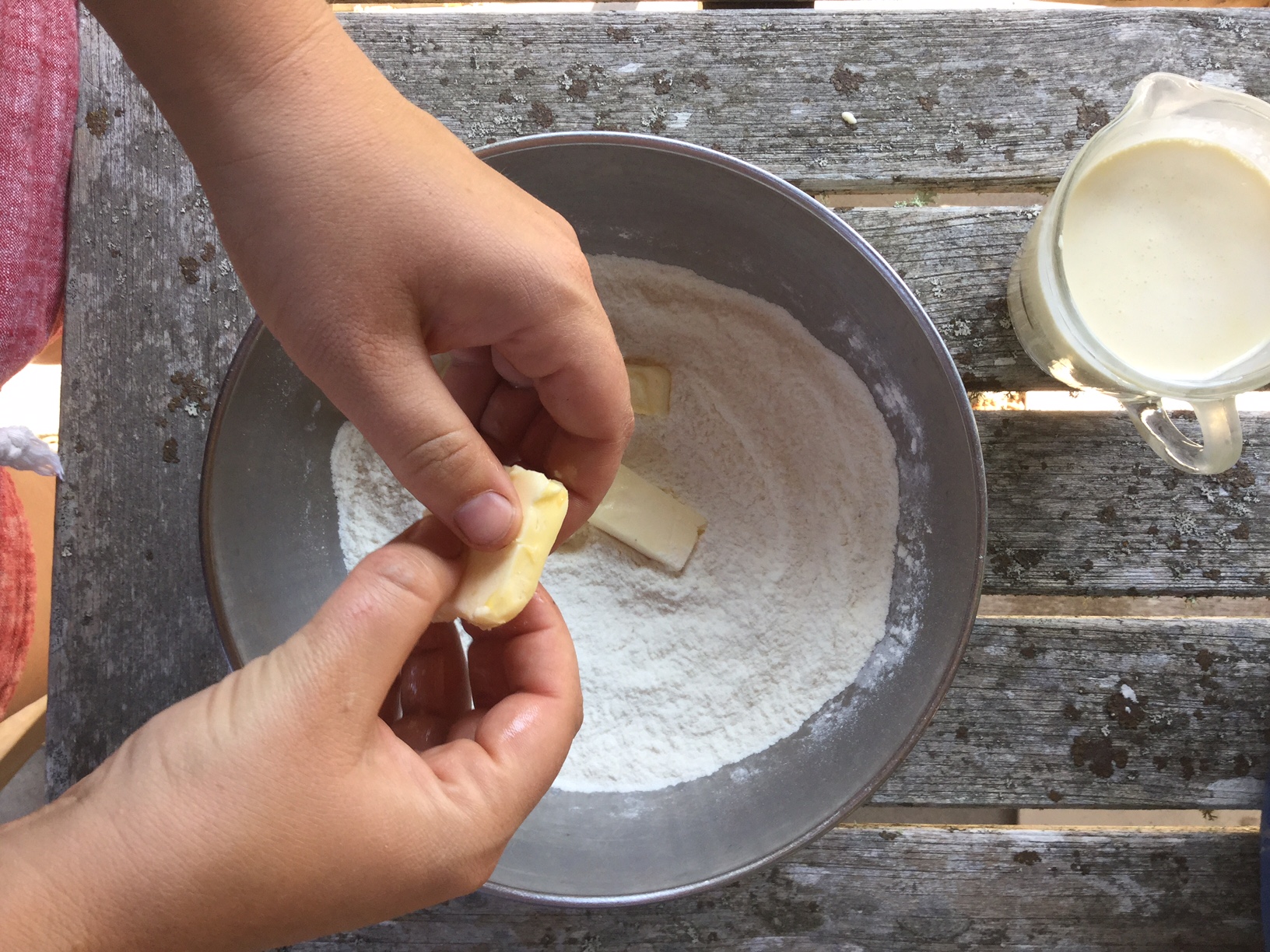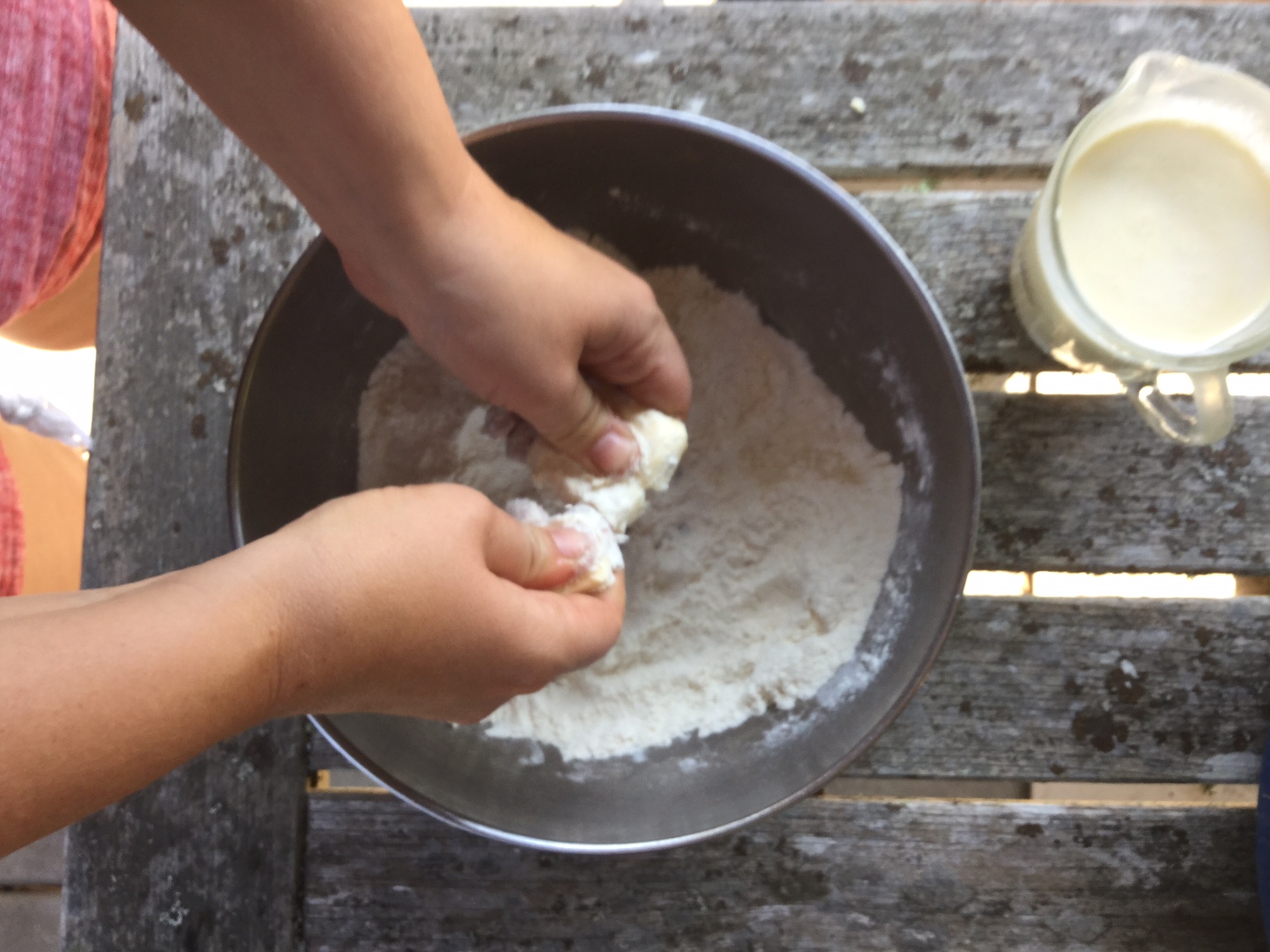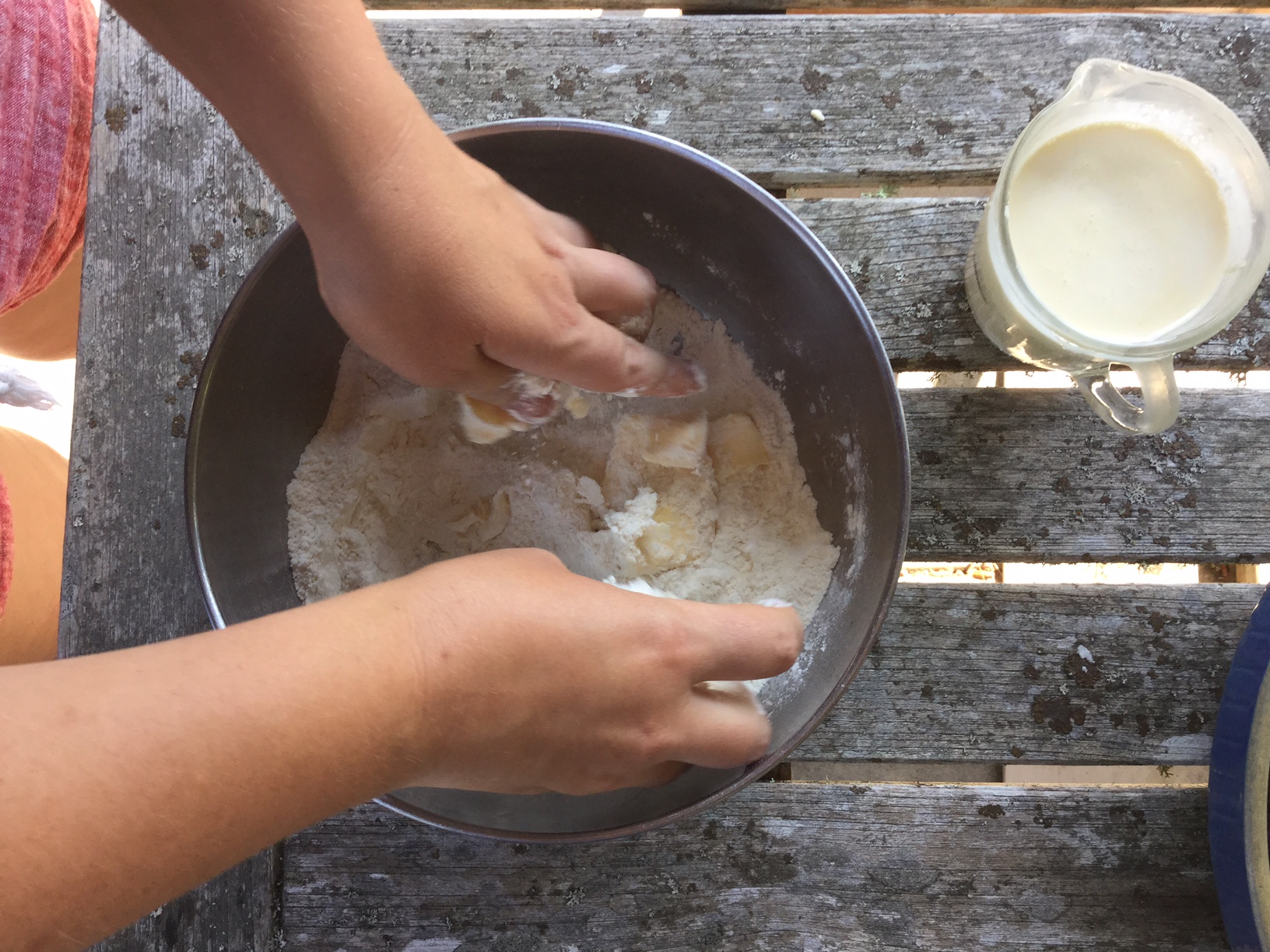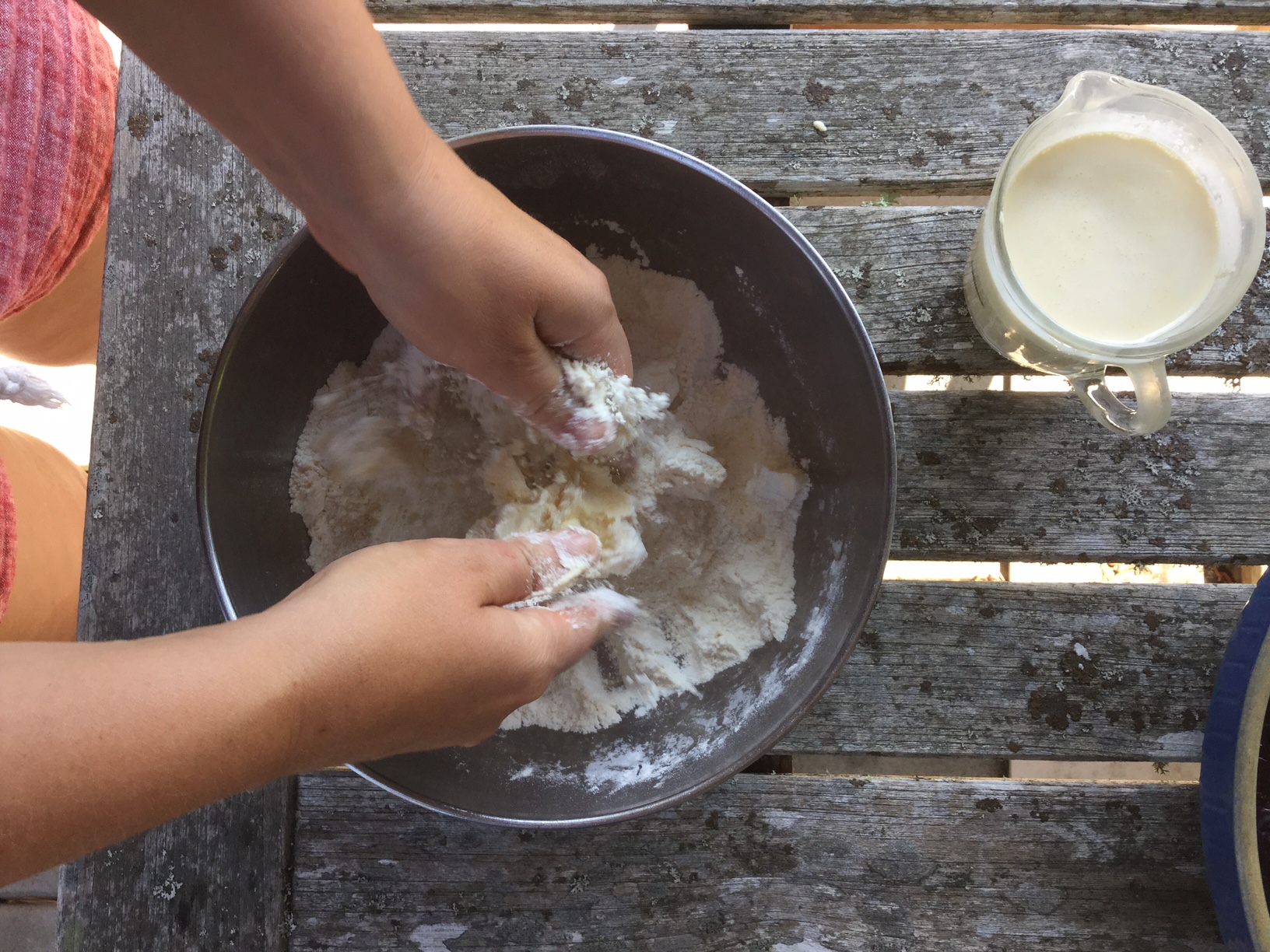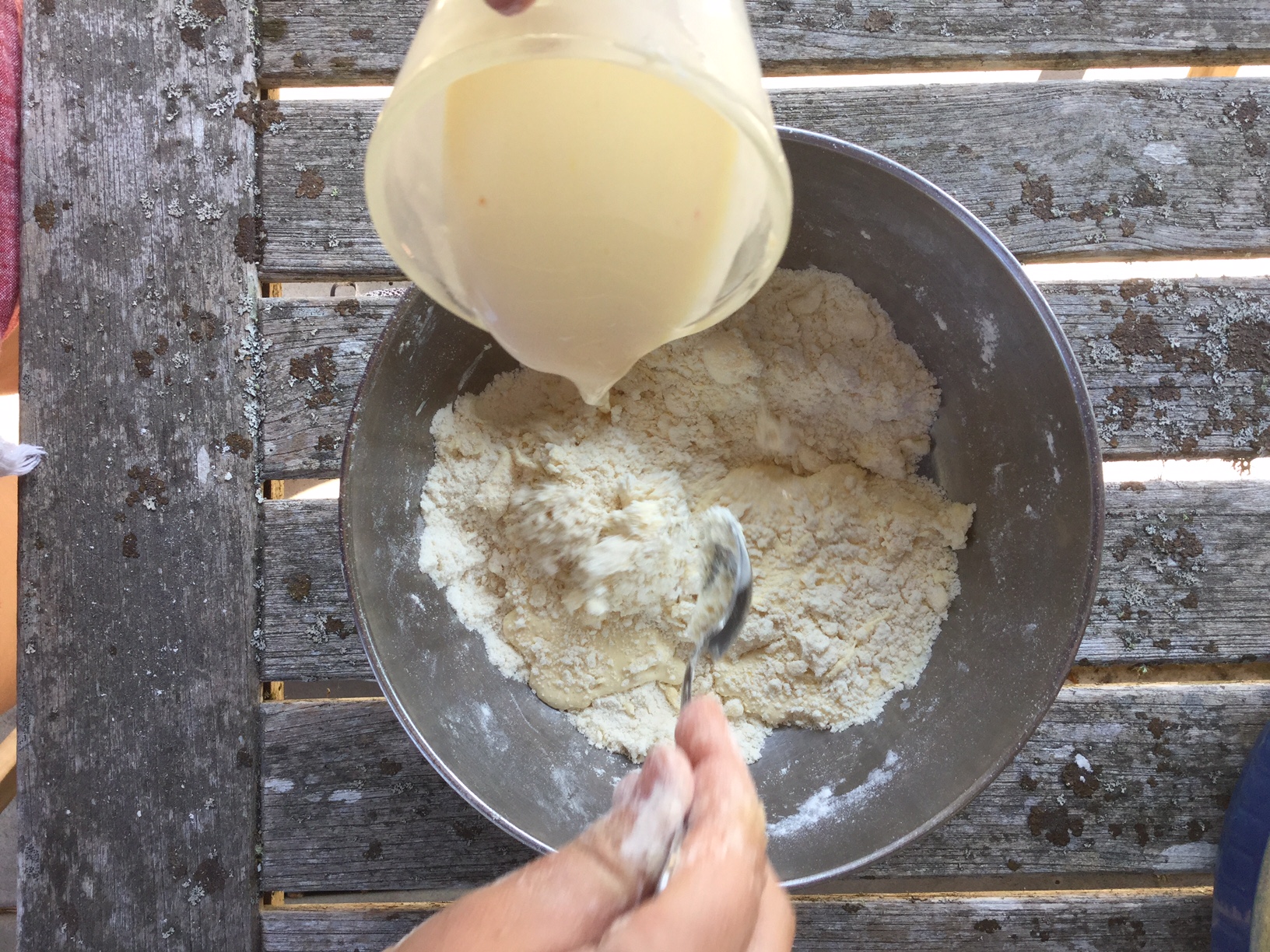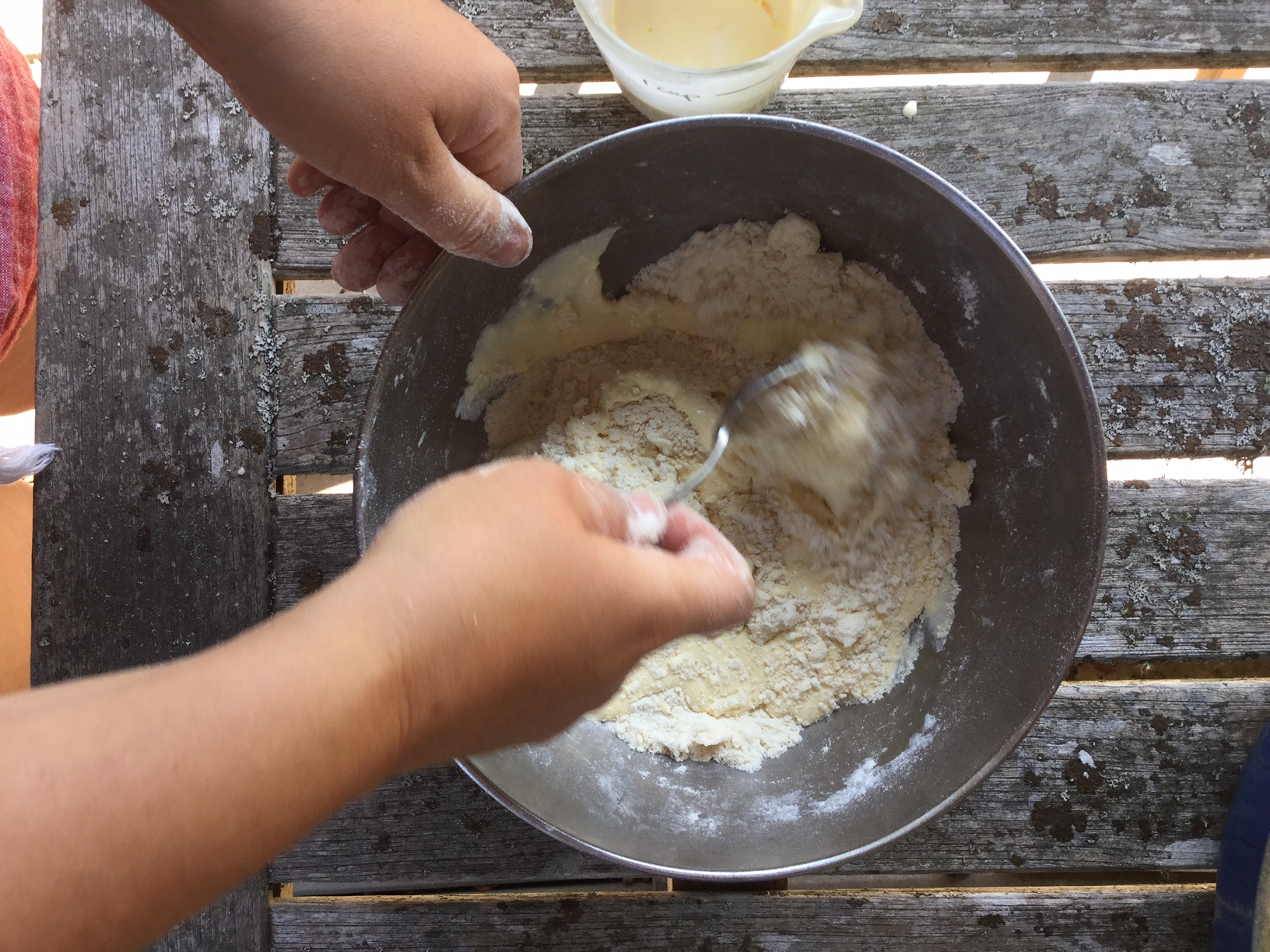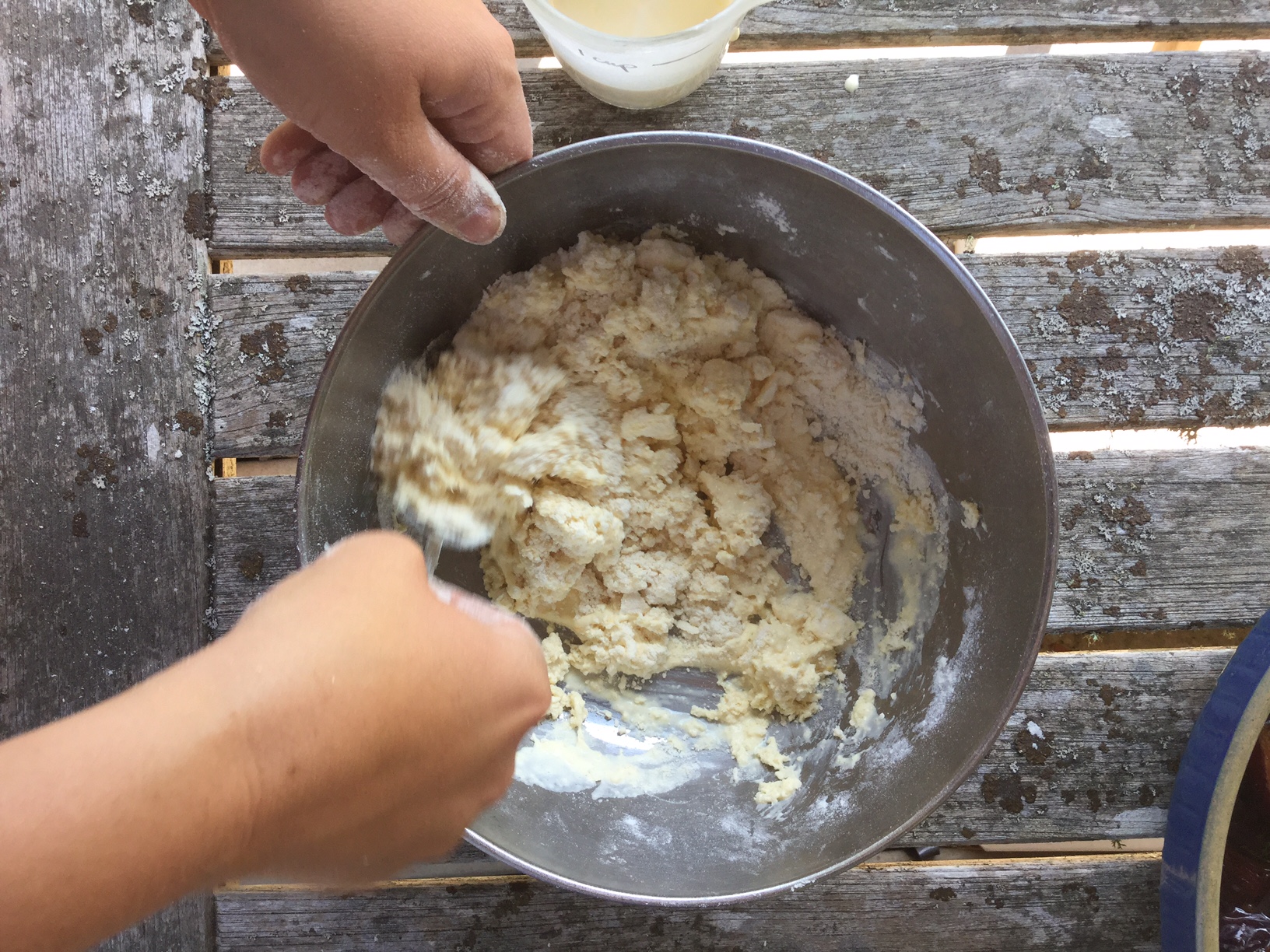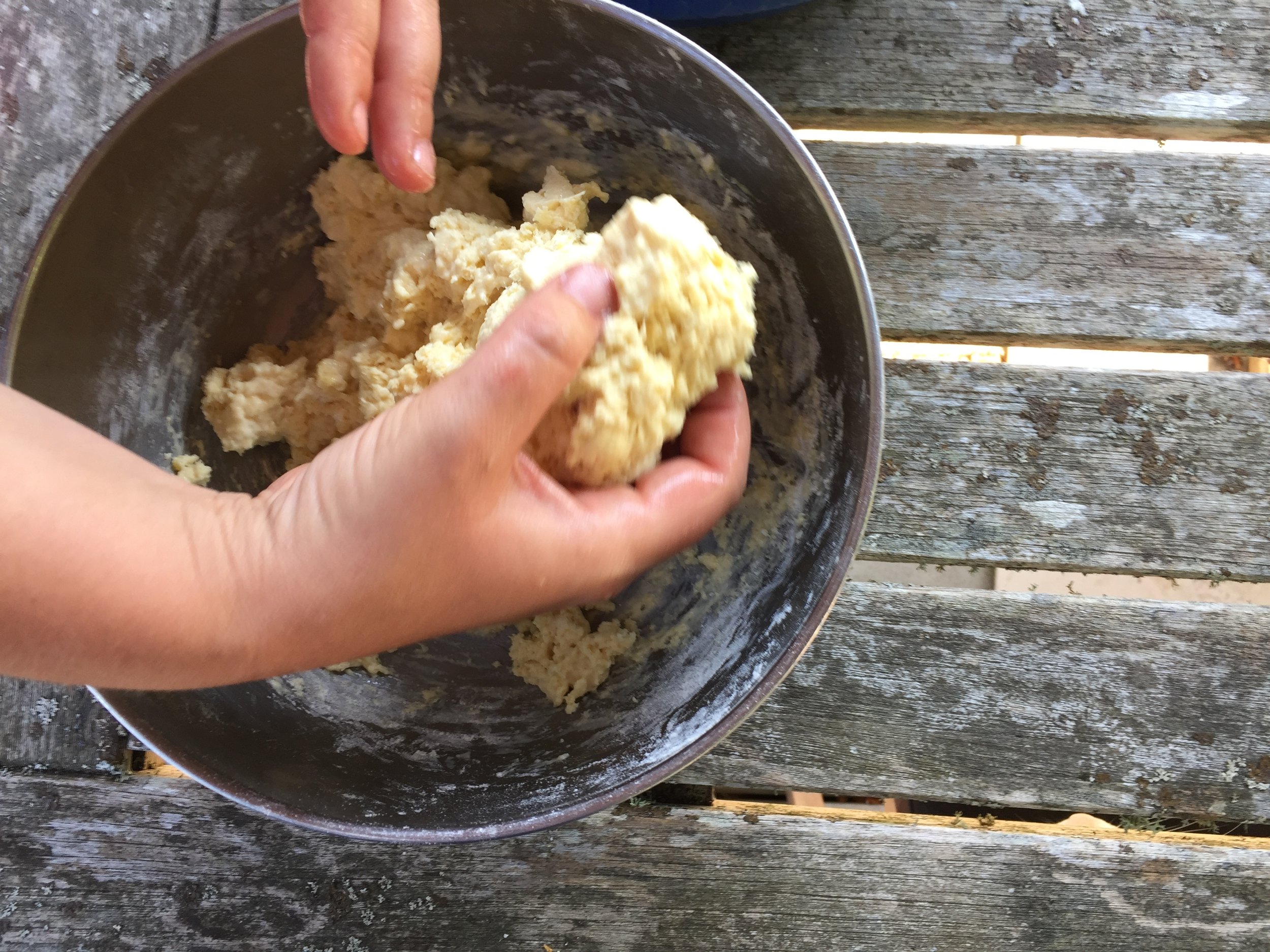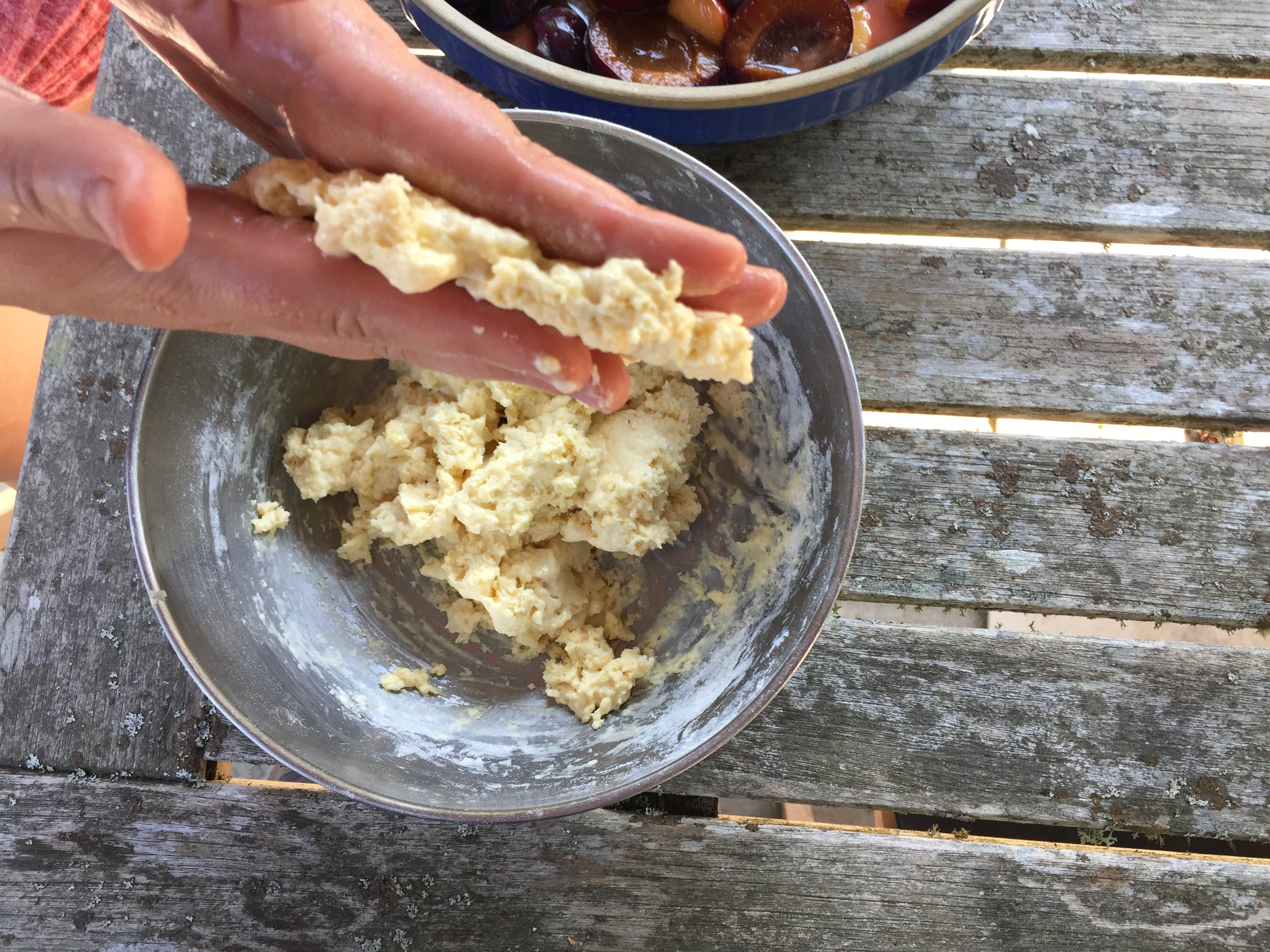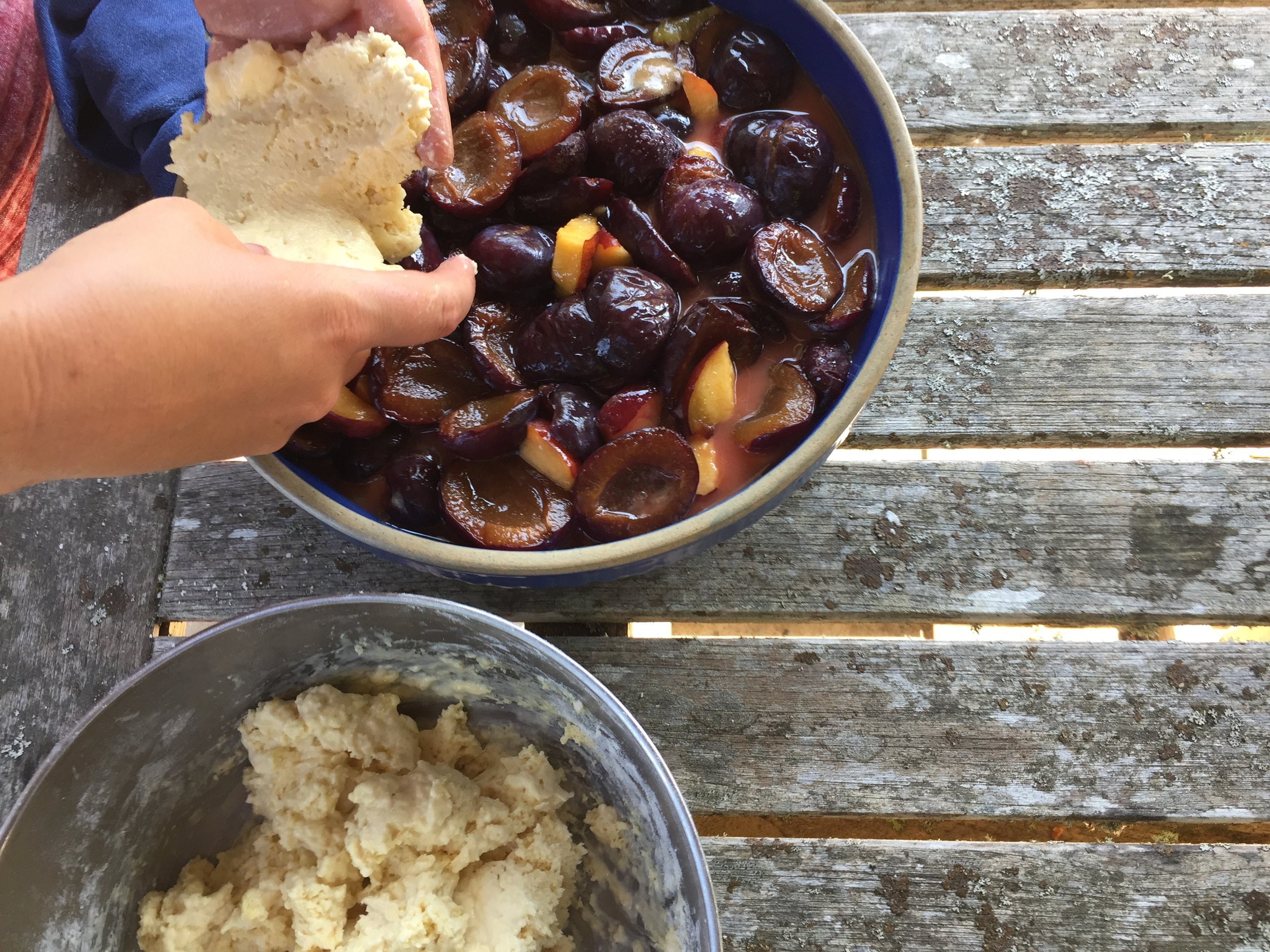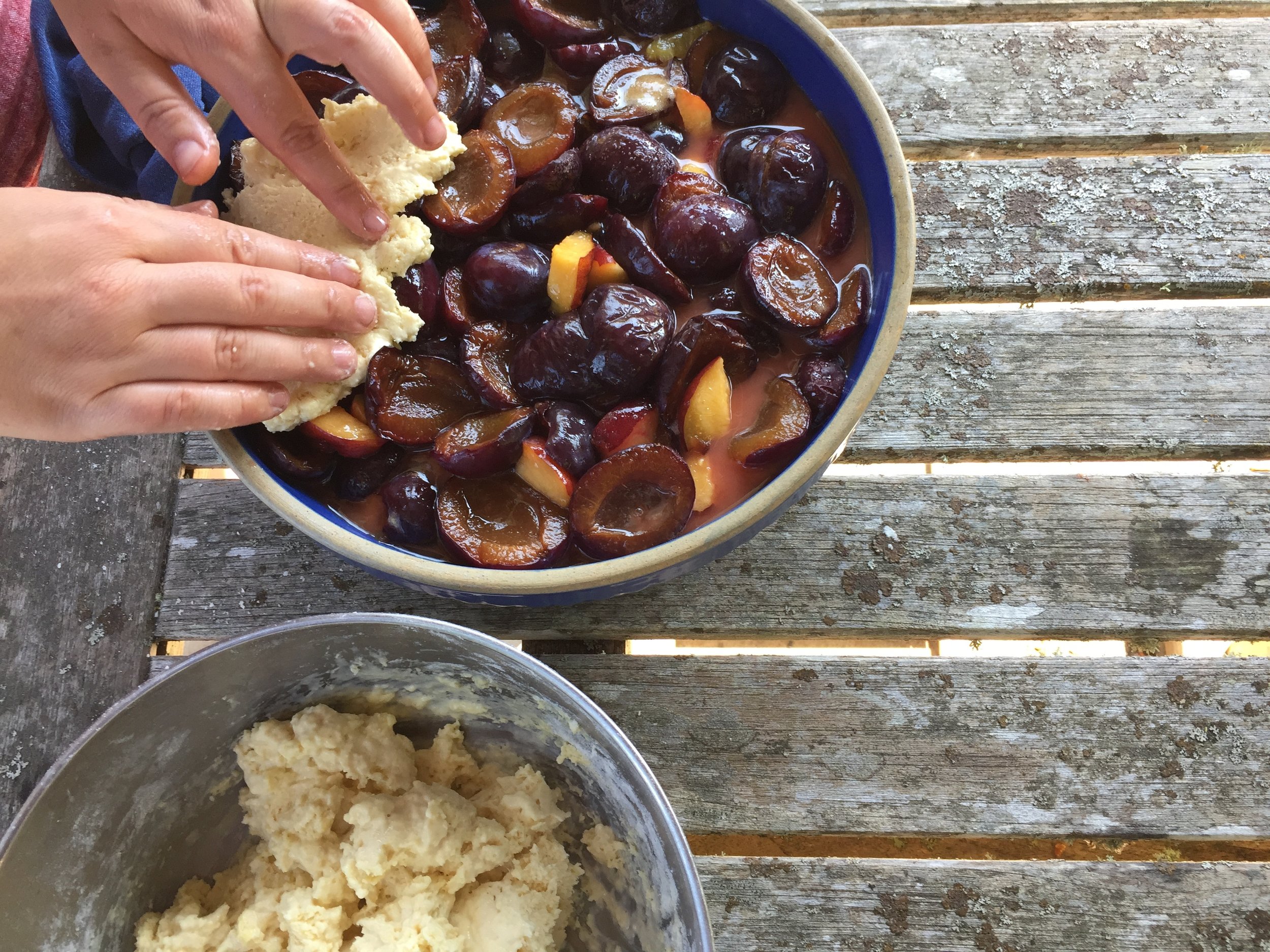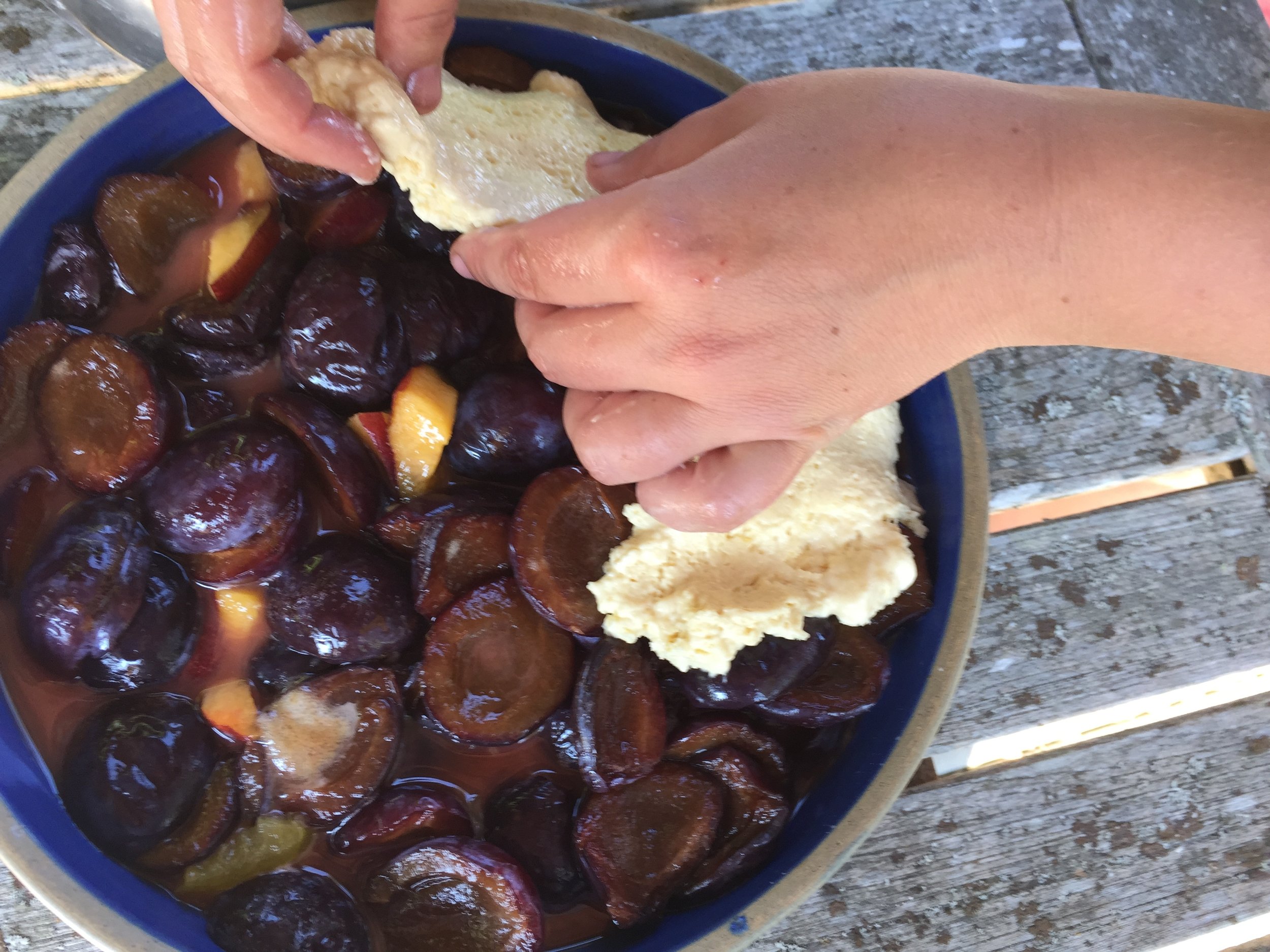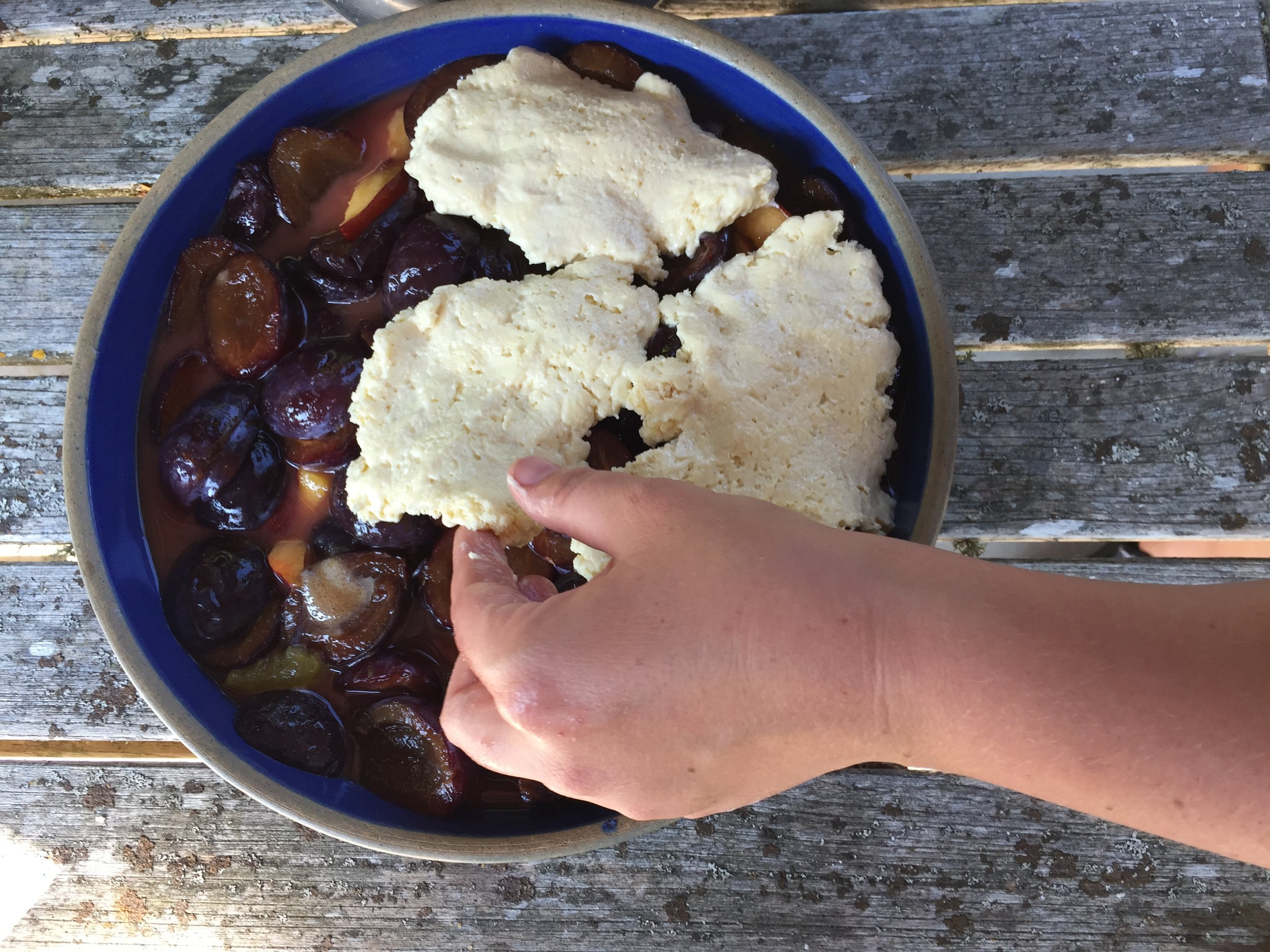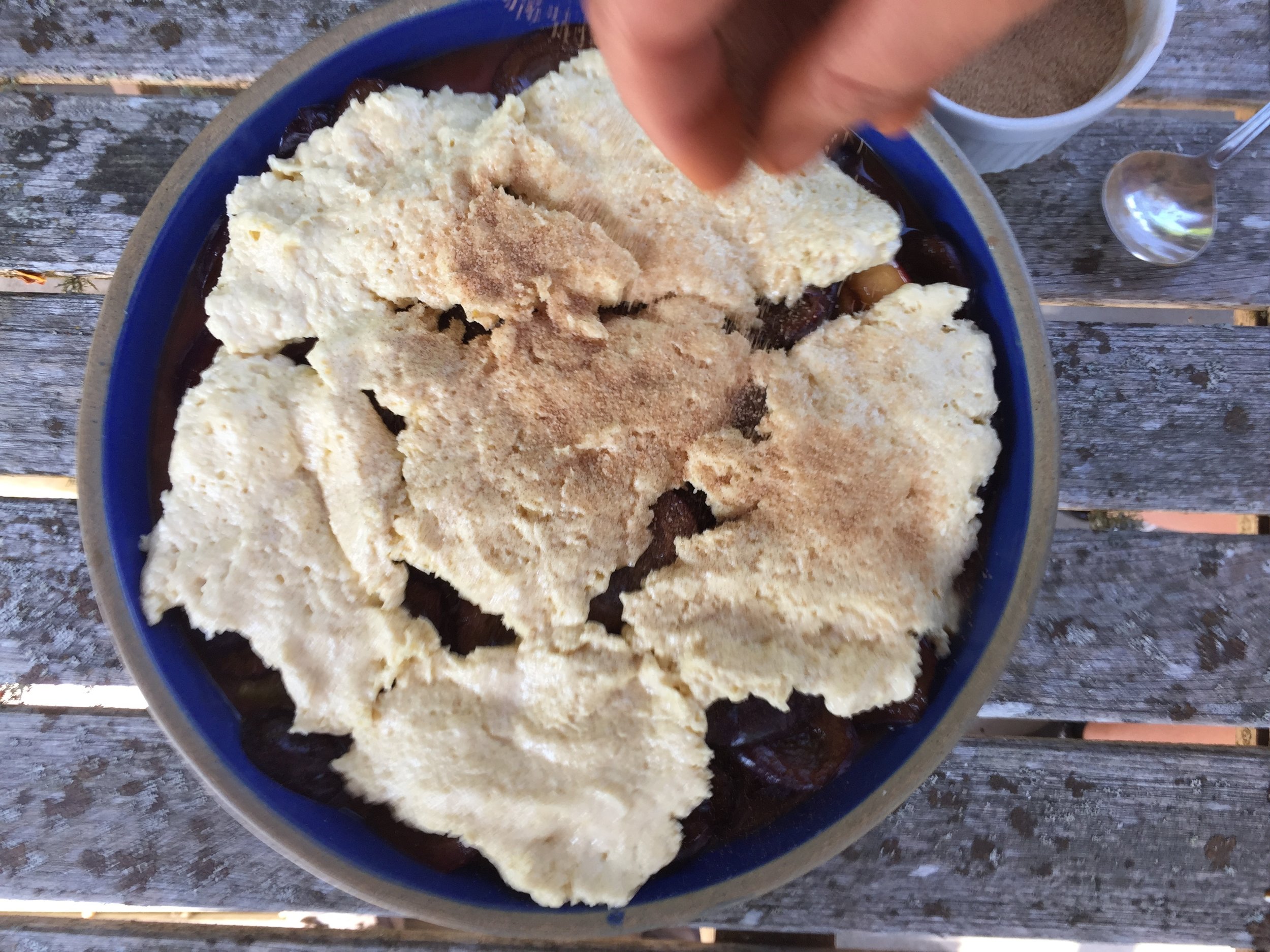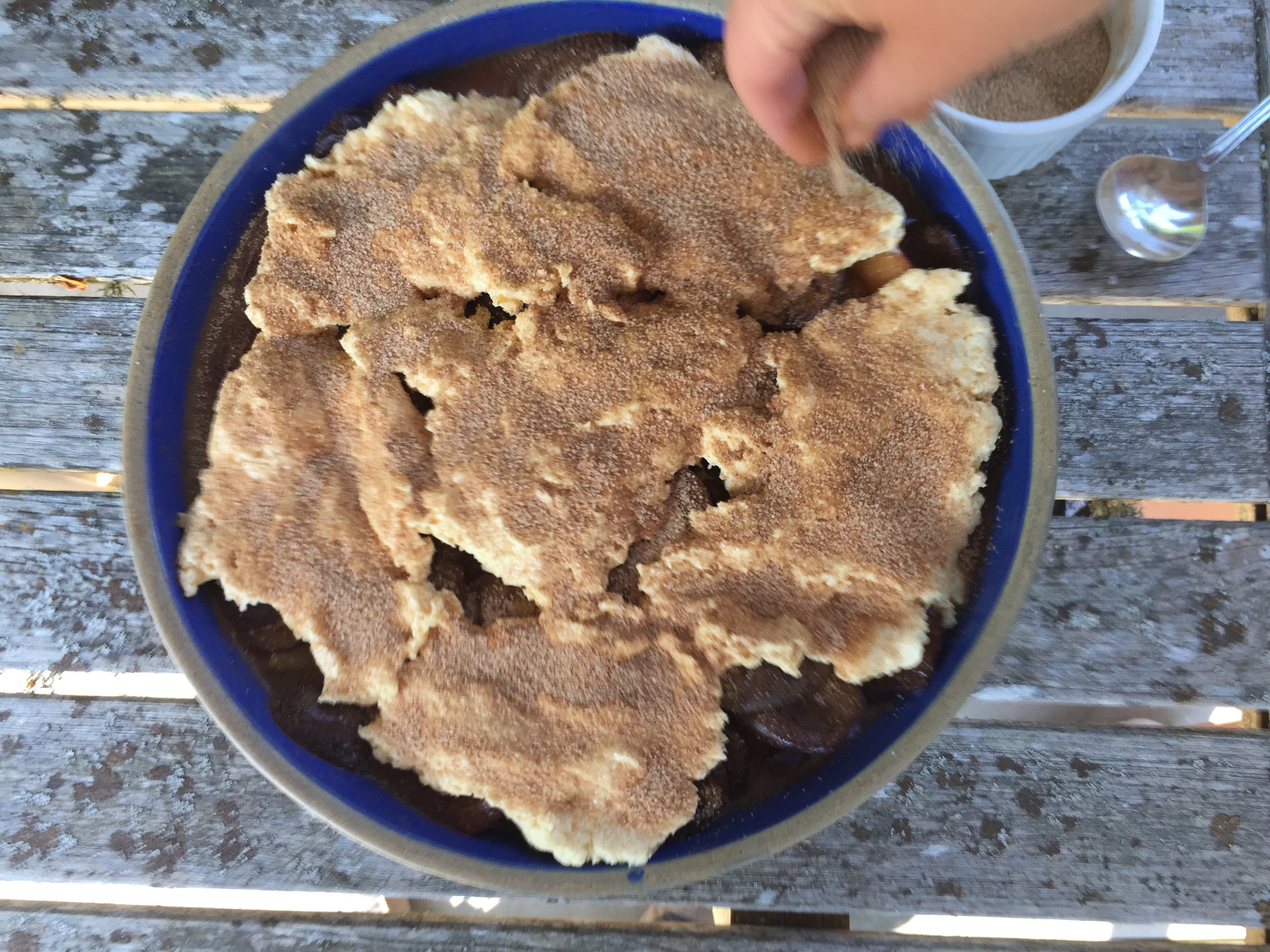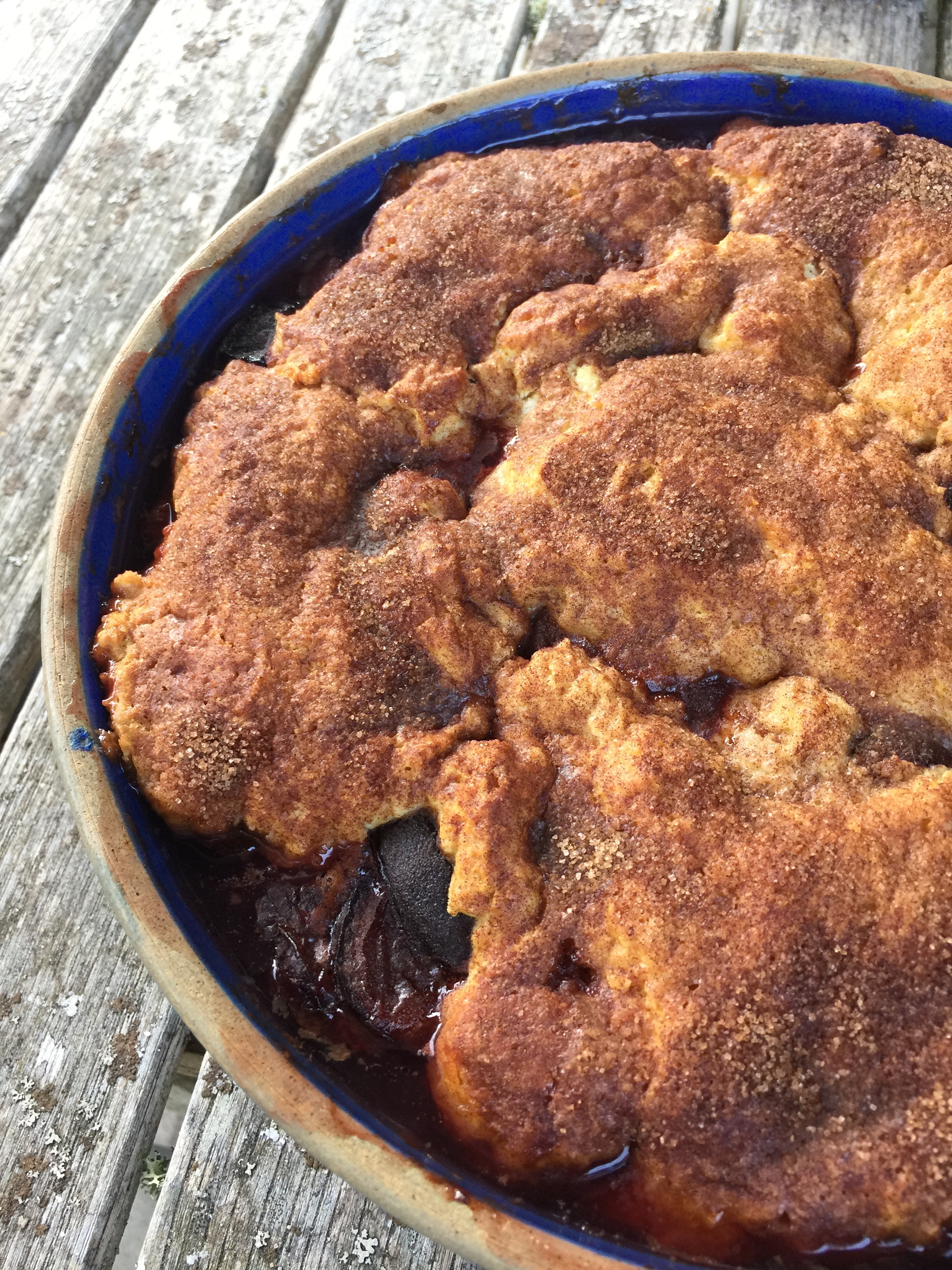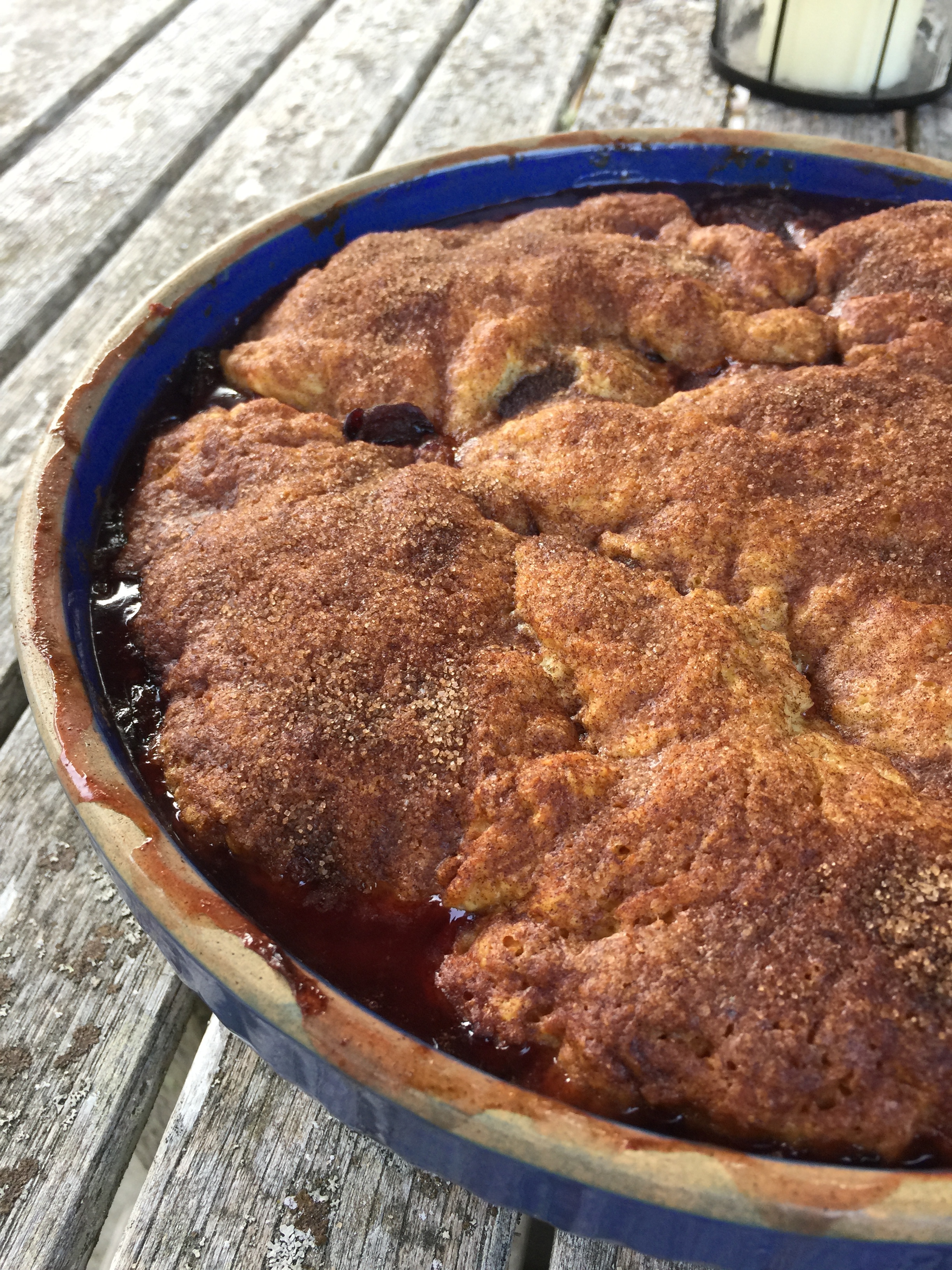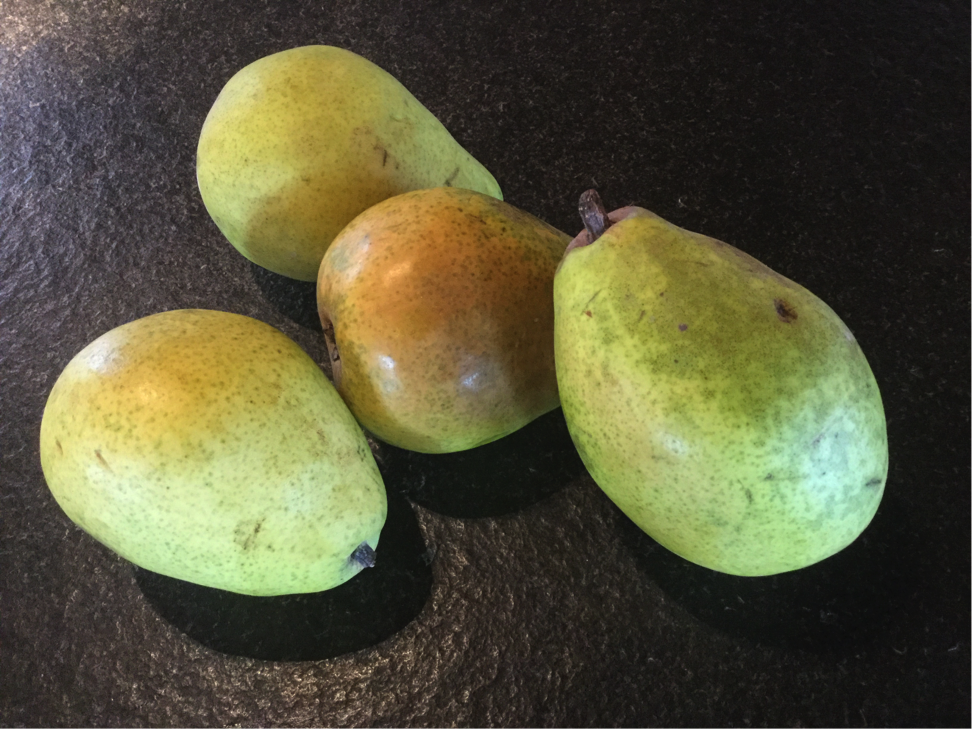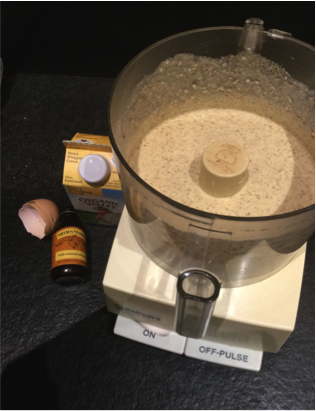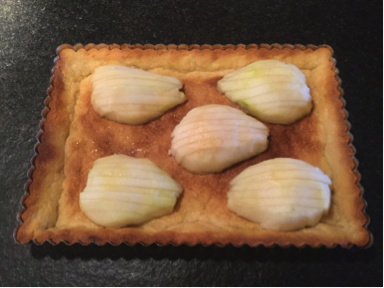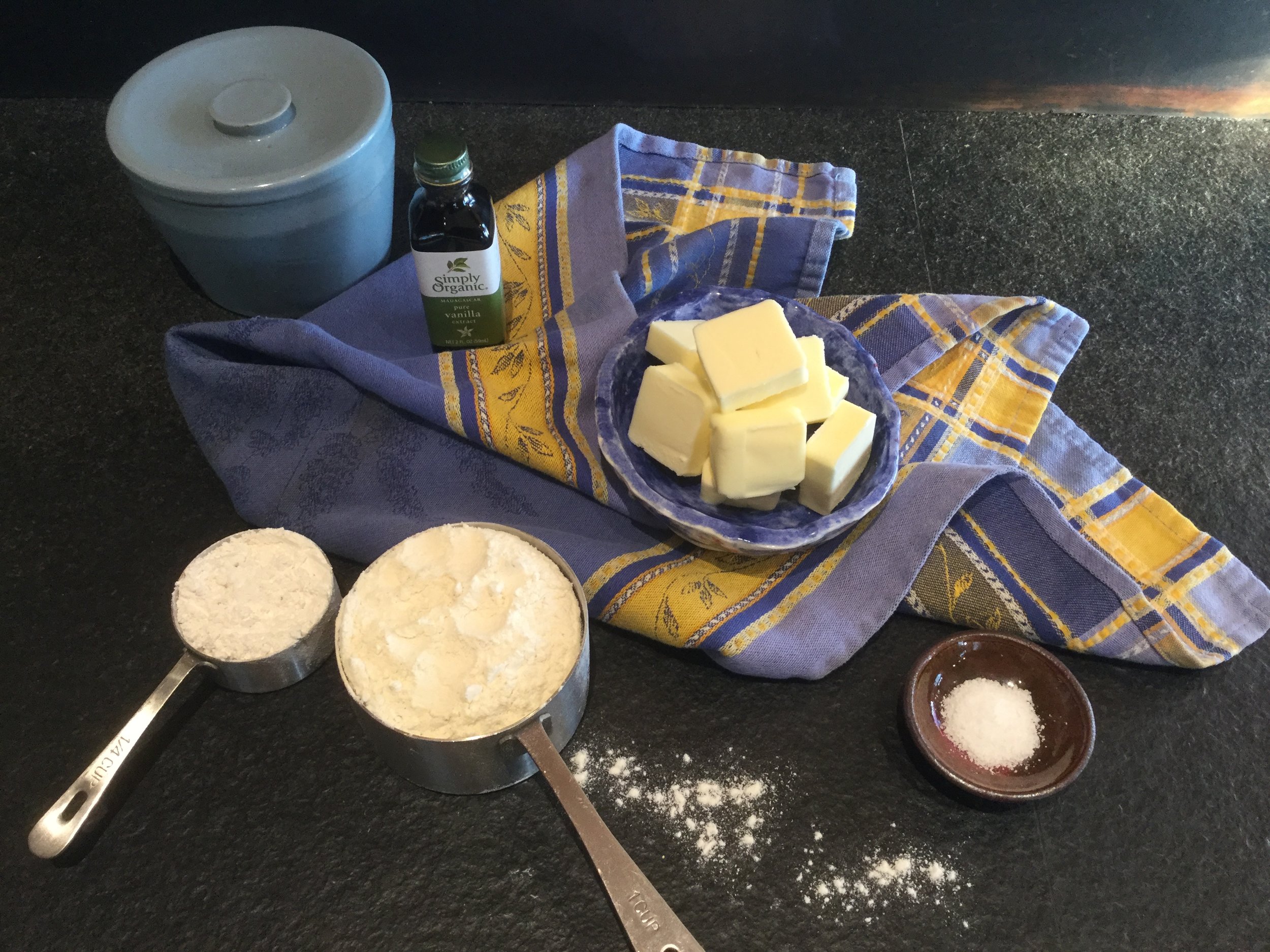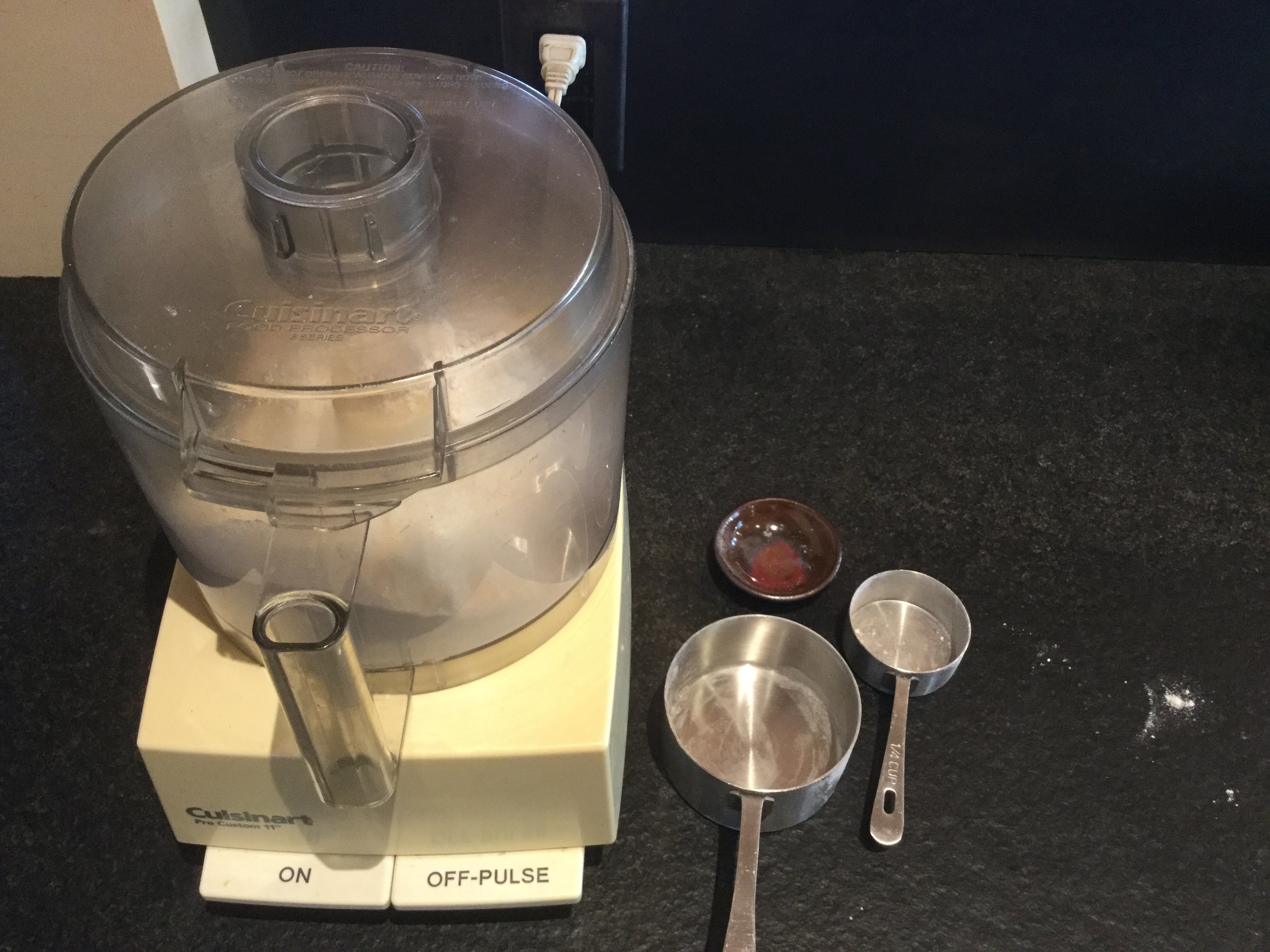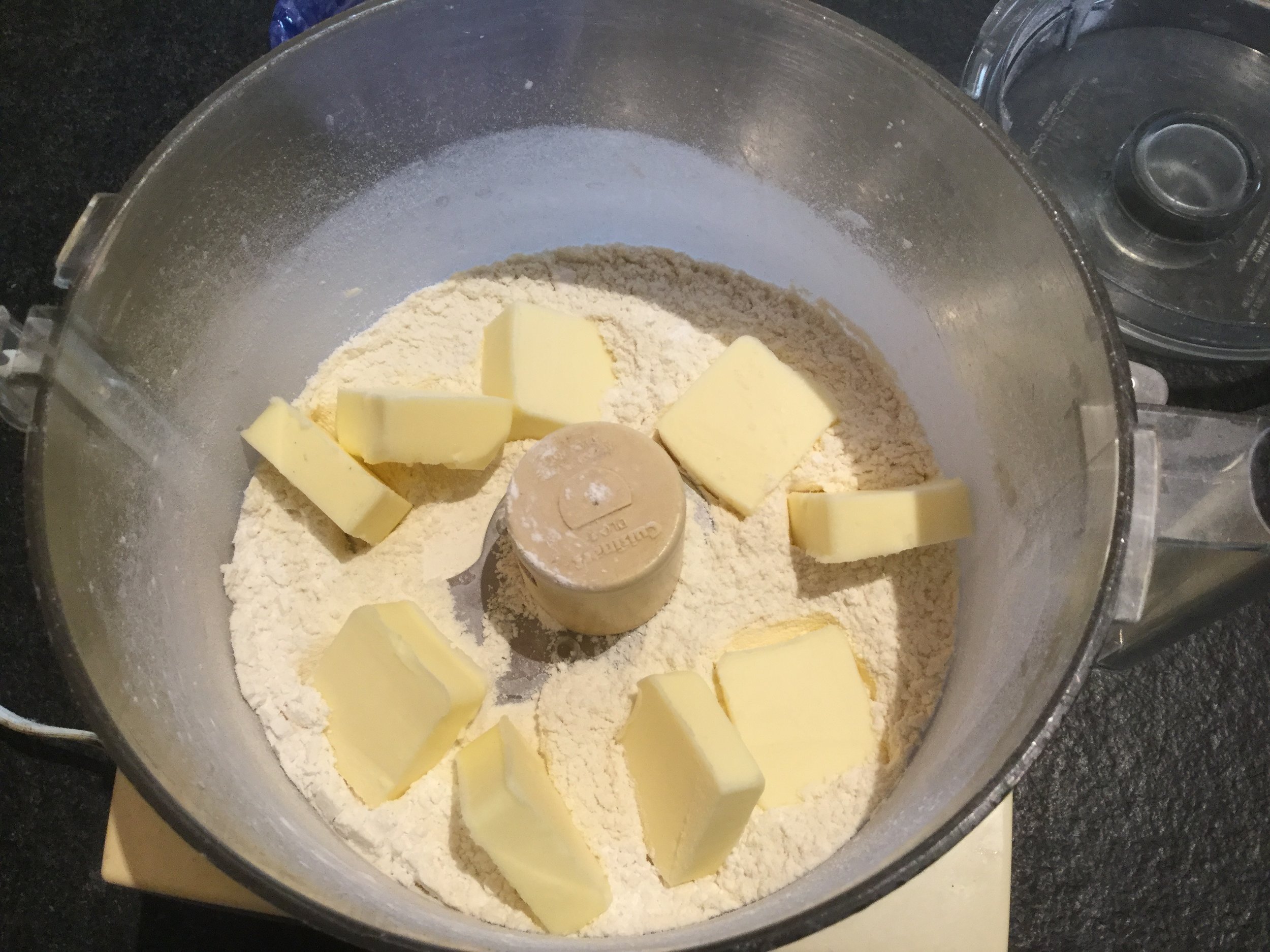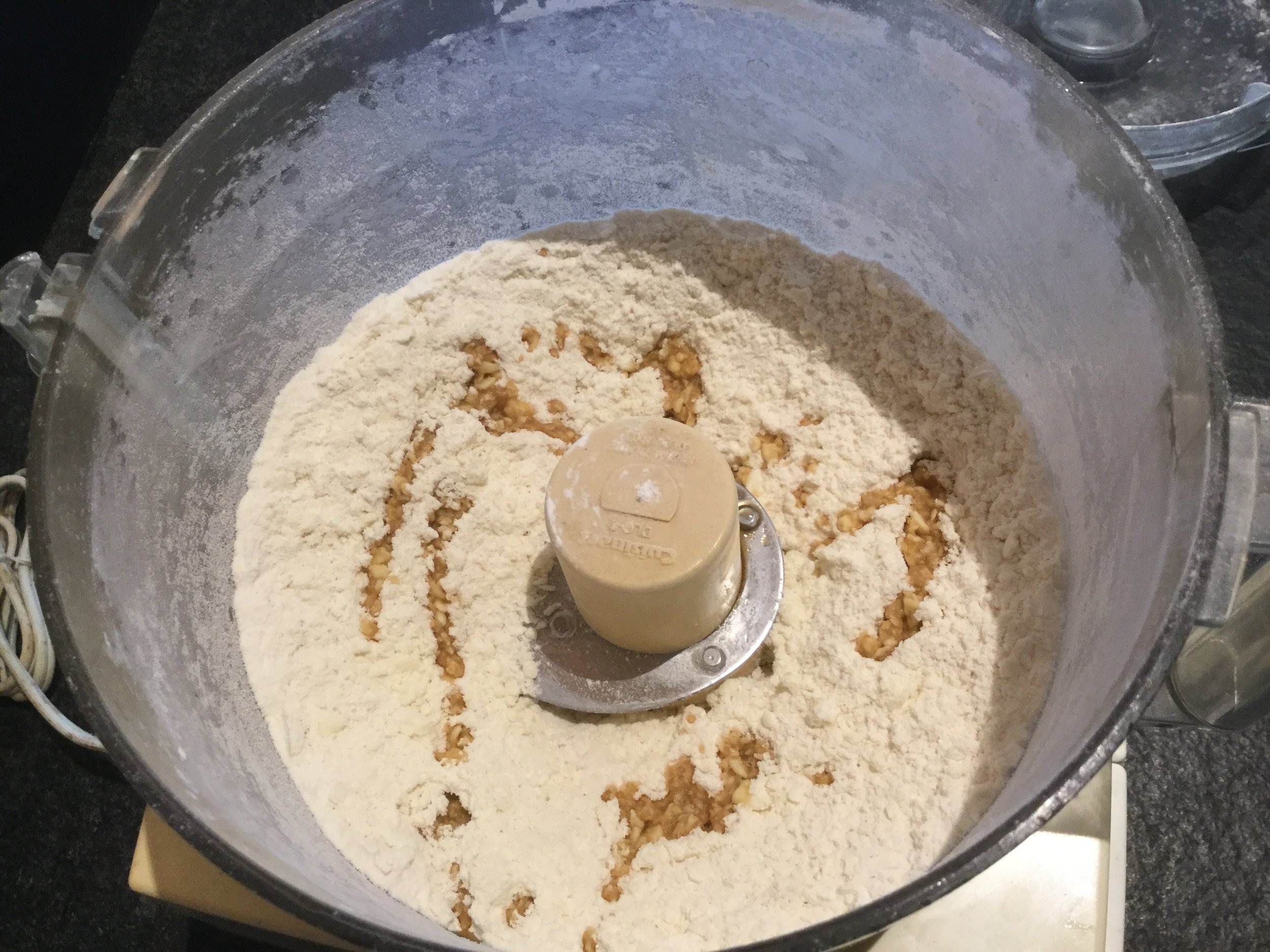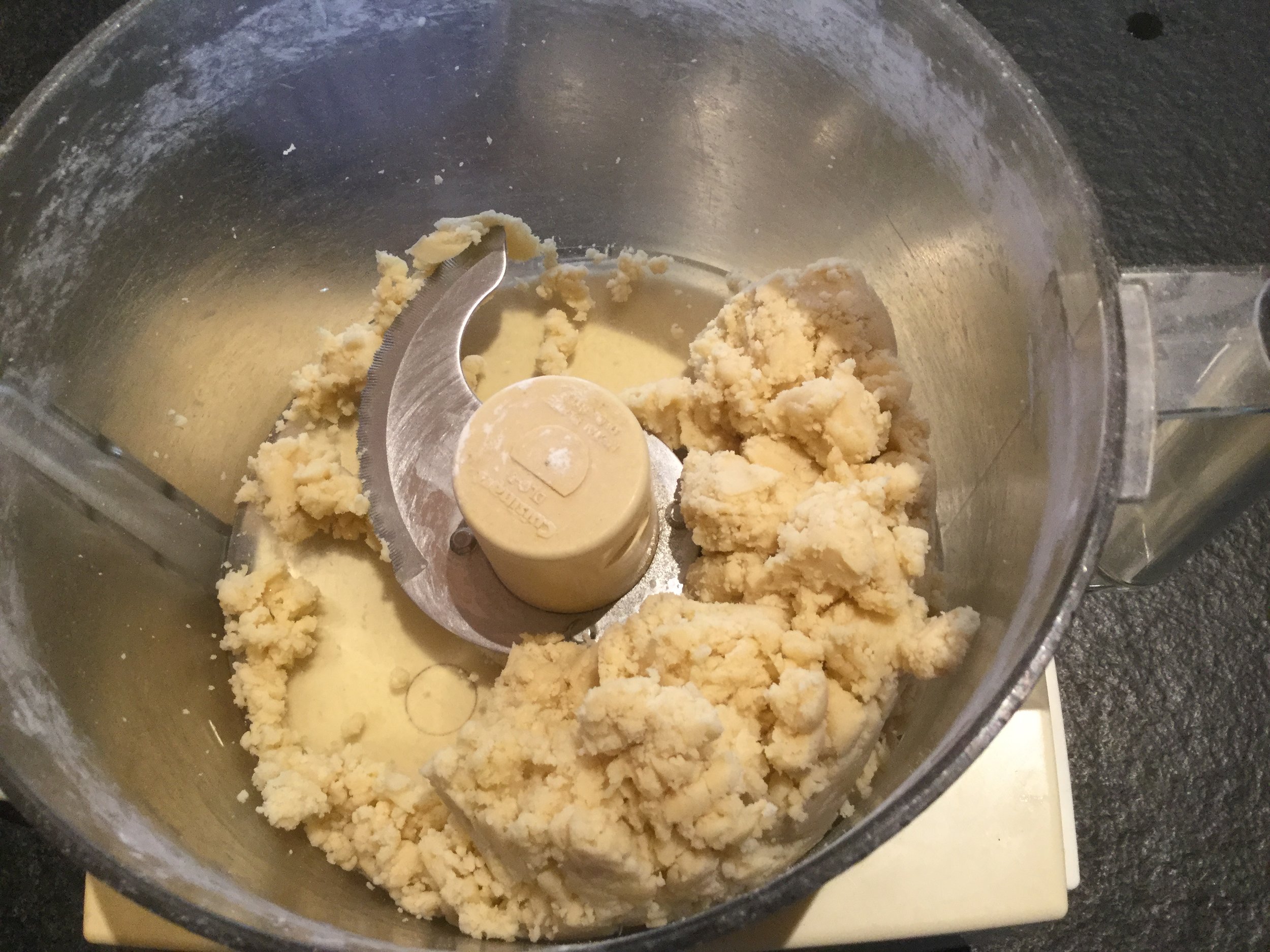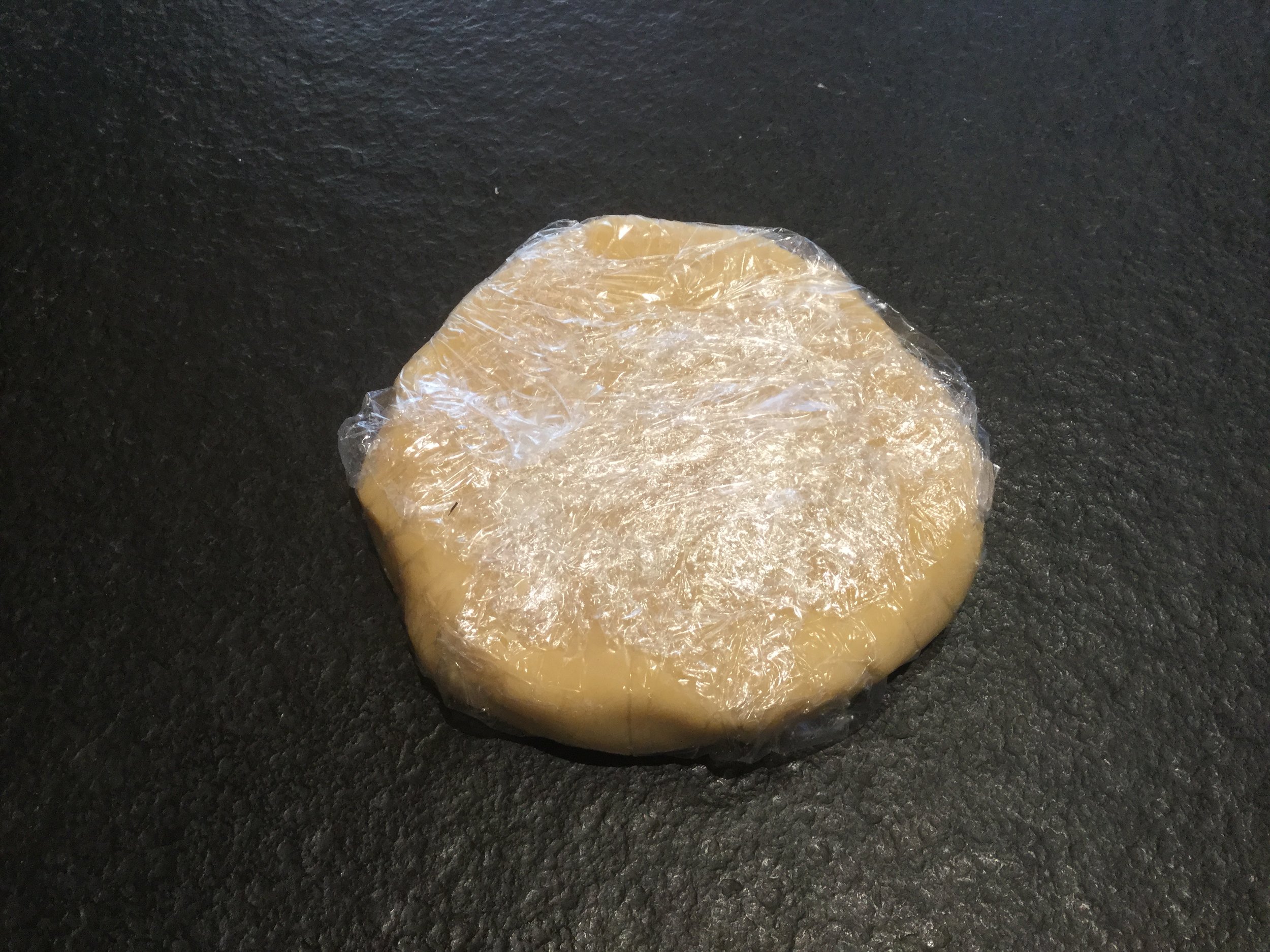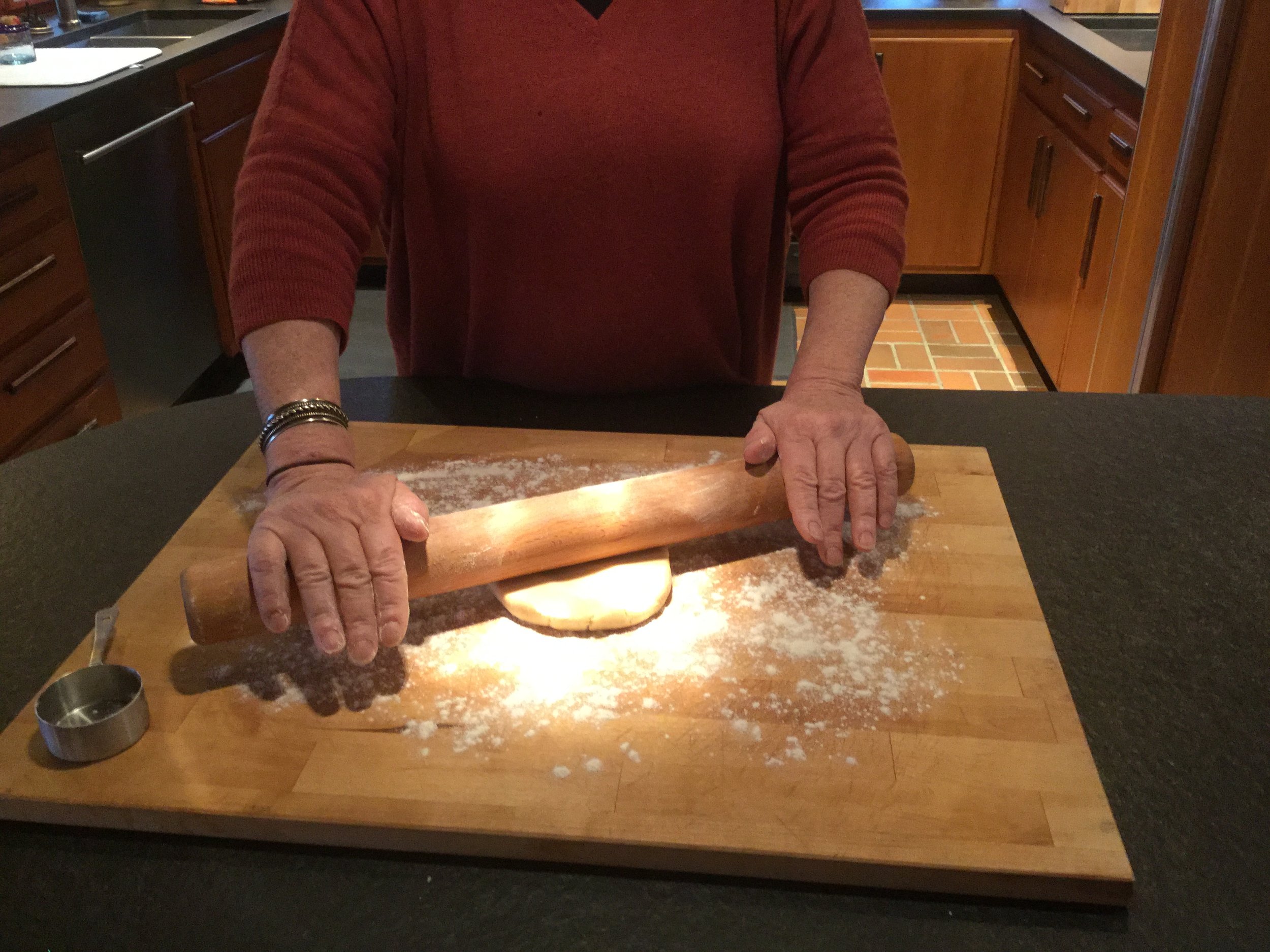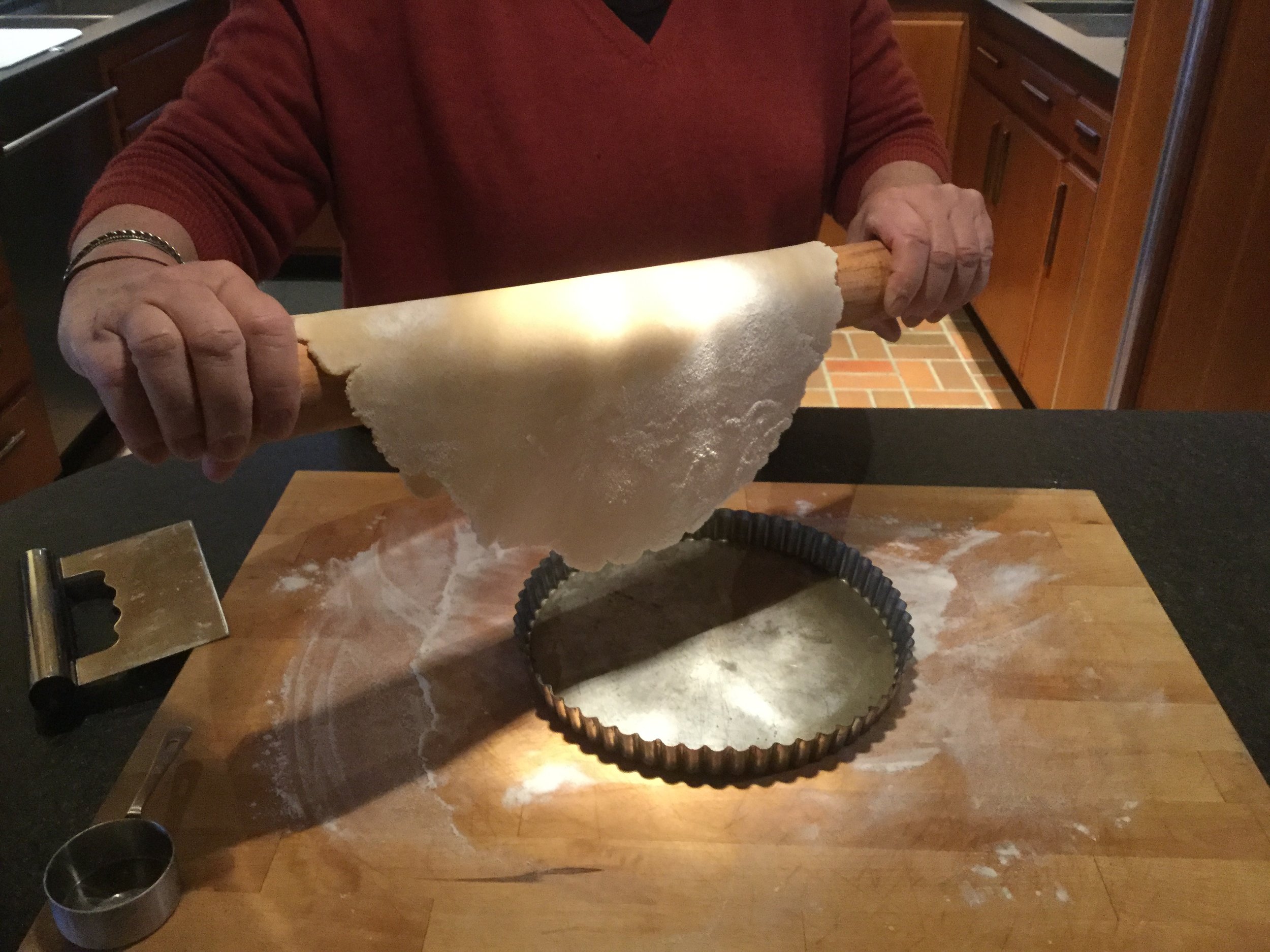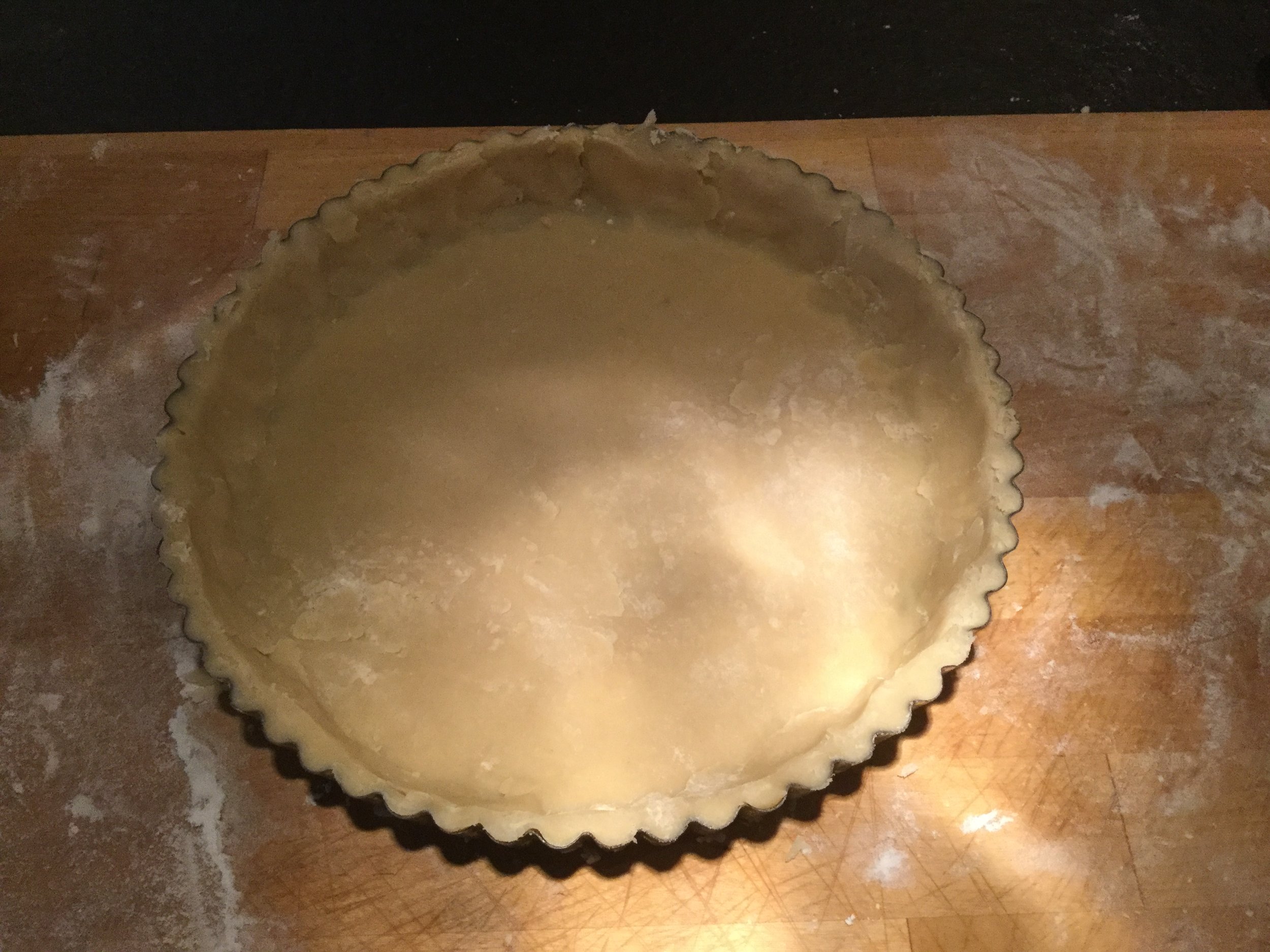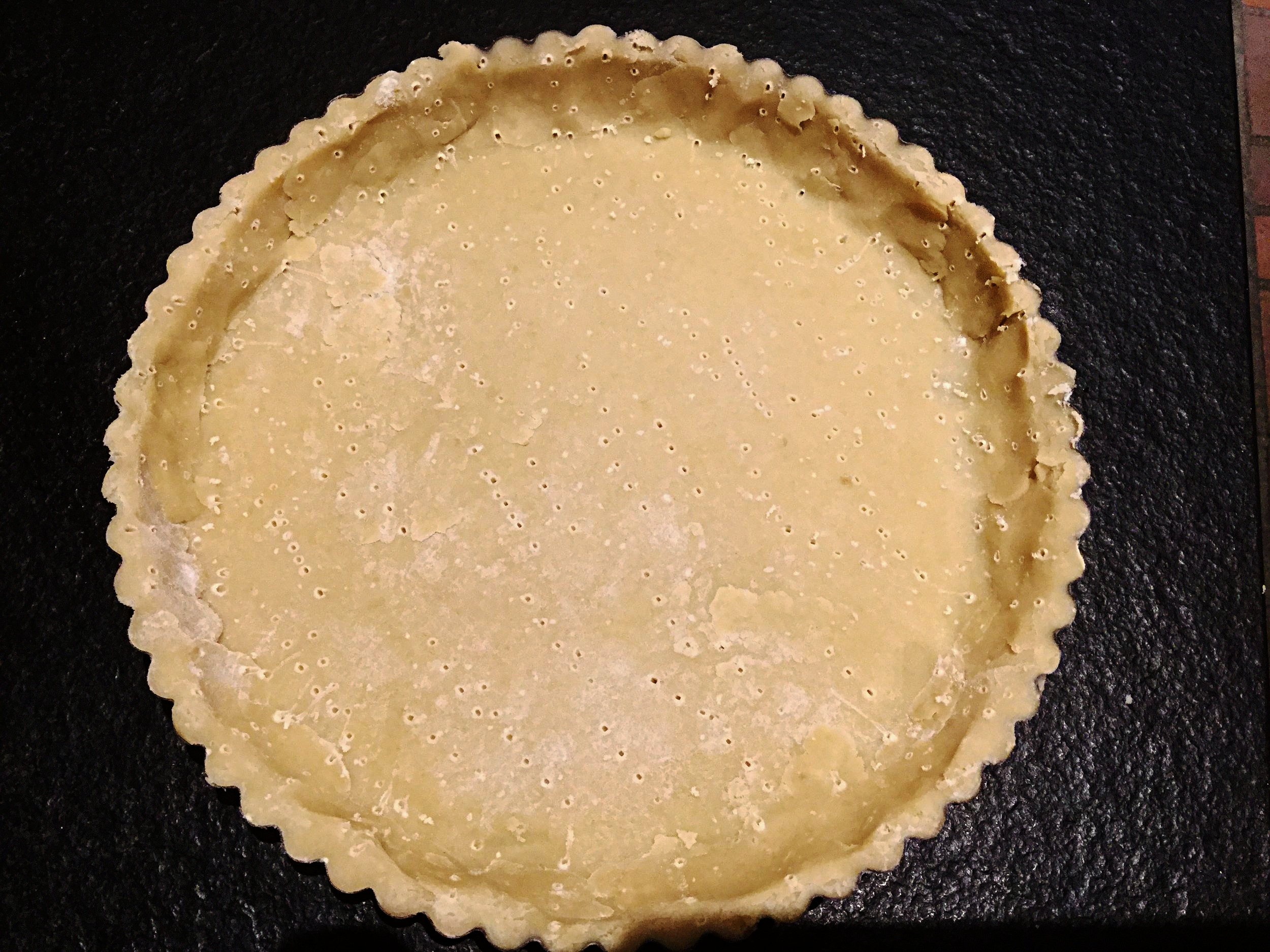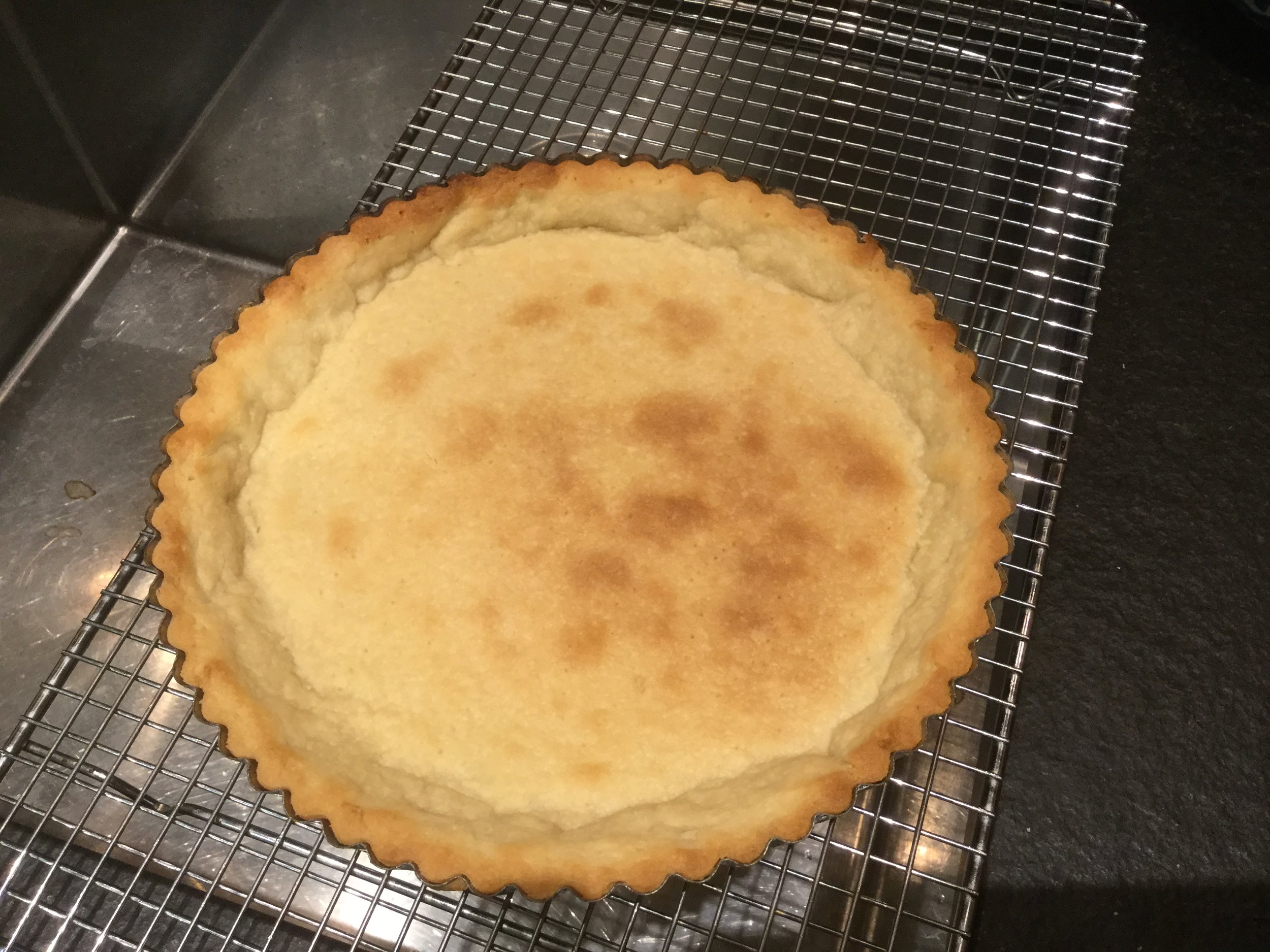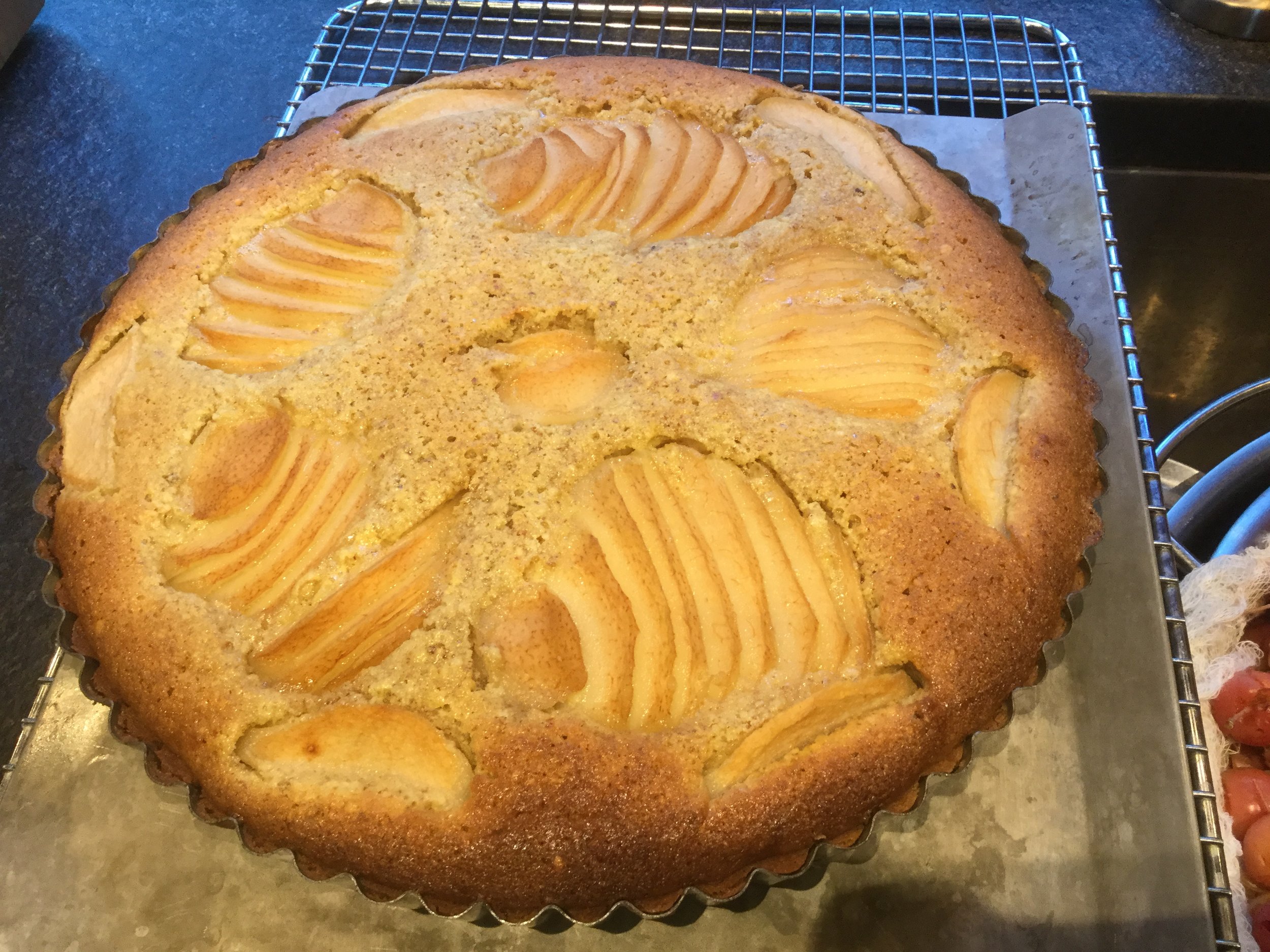My favorite cobbler is made with Italian prune plums that we grow on our farm. Summer is cobbler season and you can make a wonderful cobbler with plums, peaches, nectarines and berries, or a combination of them all. I add sugar to sweeten and cornstarch to thicken the fruit/berry juices.
Filling
- Sliced fruit (enough to fill your pan or dish)
- Cornstarch (two teaspoons per pound of fruit)
- Sugar to taste (varies depending on amount & type of fruit)
Cobbler Dough
- 1 1/4 cup all purpose flour
- 2 teaspoons baking powder
- 1 tablespoon sugar
- 1/2 teaspoon vanilla
- 2/3 cup cream
- 1 egg
- 1/4 cup unsalted butter, chilled
- 2 teaspoons cinnamon + 2 tablespoons sugar (for topping)
Mix the cornstarch and sugar together in a small bowl. Start with less sugar than you think you will need, and increase as you tasted.Toss sliced fruit in sugar and cornstarch (amounts vary depending on how big you want your cobbler).
In a medium bowl mix flour, baking powder, 1 tablespoon sugar and salt. In a 1 cup measuring cup measure 2/3 cup heavy cream, crack in the egg, and mix with the vanilla.
Cut up the chilled butter into 4 pieces and add it to the flour mixture, smearing between your thumb and pointer finger to make long strips of butter. Keep smearing the flour and butter together until they come together like a rough meal. Then pour in the heavy cream mixture and using a spoon or fork, toss the flour mixture together with the cream mixture. A rough dough will form; don't overwork it!
Wet your hands with some water and take about a 1/2 cup of the dough in your hand. Pat the dough out to about a half inch thick and lay on top of fruit. Repeat, laying the patties of dough next to each other, touching, but leaving spaces between the rounded edges of the patties where the filling can be seen. Continue until all the dough is gone. Sprinkle with cinnamon and sugar. Bake at 350 degrees for 45 mins, or until the dough is deeply brown and the filling is bubbling vigorously.
Let cool for at least two hours before serving. Homemade vanilla or buttermilk ice cream is perfect with this.



